Halifax is one of Yorkshire’s gritty industrial towns, with the world’s oldest surviving choral society and a surprisingly handsome parish church. Halifax Golf Club, a few miles north of the town, boasts a rugged moorland course. I played it yesterday with Andy Levett and a young lad called Callum who joined us from the 2nd hole. His advice on the best lines to take from the tee was often invaluable. And his ball-spotting skills in murky light were extremely valuable. The weather was cold and misty, so I must apologise in advance for the poor pictures – which would get no rating at all on the Arble scale.
This is largely a James Braid course of the early years of the 20th century with, it seems, alterations to the 2nd and 10th made by Dr MacKenzie in 1912. The layout was clearly dictated by the abundant natural features, resulting in a good number of exciting green and teeing ground locations. There are some blind shots, especially if you finish in one of the river valleys or grassy gullies which interrupt a good number of holes. Many fairways slope considerably to one side or the other. What struck us was the length of compulsory carry needed from many tees, which must have been formidable in the days of primitive clubs and balls. The moorland turf was springy and remarkably dry, providing a fine playing surface. The greens were still in their winter woollies. There is some savage rough if you spray the ball wildly, but for the most part the fairways are generous, as they should be, sloping as so many do, and when the wind is funnelled up the valley it can make a difference of several clubs. The calling of curlews is an added attraction, and there is a great sense of getting away from it all, despite public footpaths and tracks crossing several holes.

The course criss-crosses a valley, climbing gently until on the 12th you break out onto high ground, before plunging back down to the valley spectacularly on the 17th.
1st 441 yards par 4
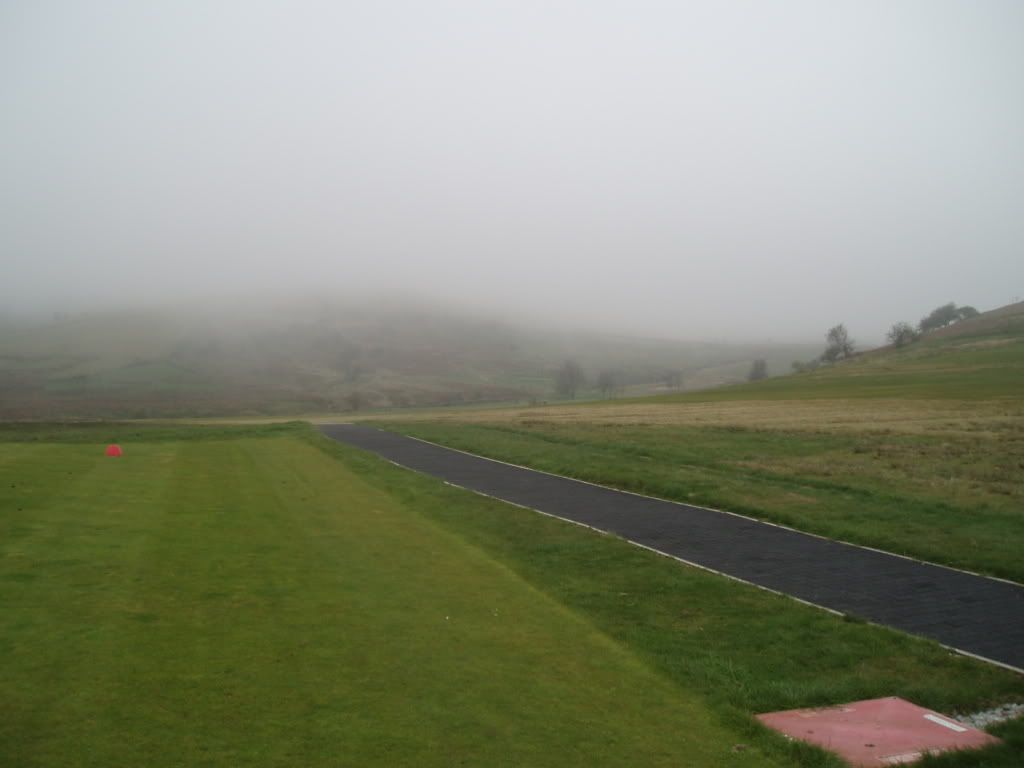
It is not easy to discern the correct line from the 1st tee with the fairway (broad and shared with the 18th) falling from view.

In fact the drive is all about angles to set up a second shot across low ground to this well-sited green.
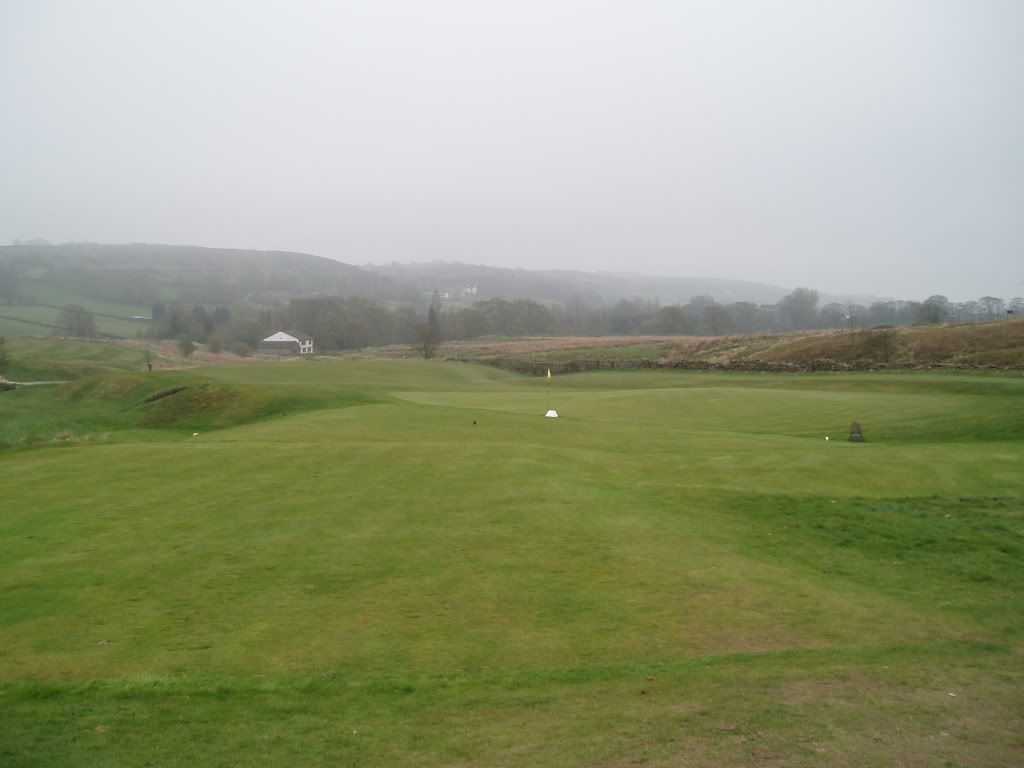
This is a big green in comparison with most others on the course and has significant internal contouring.
2nd 117 yards par 3
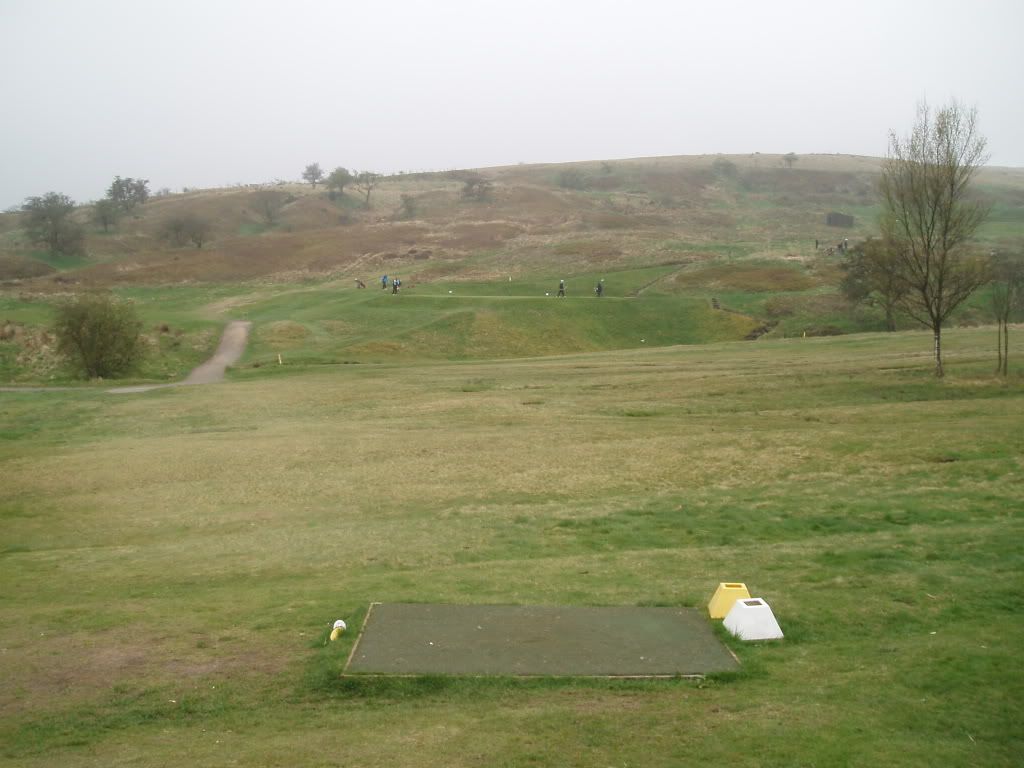
A diminutive hole, with the first of a number of ledge greens characteristic of the course. The putting surface slopes from back to front, although it is difficult to perceive against the more severe slopes of the background.
3rd 386 yards par 4
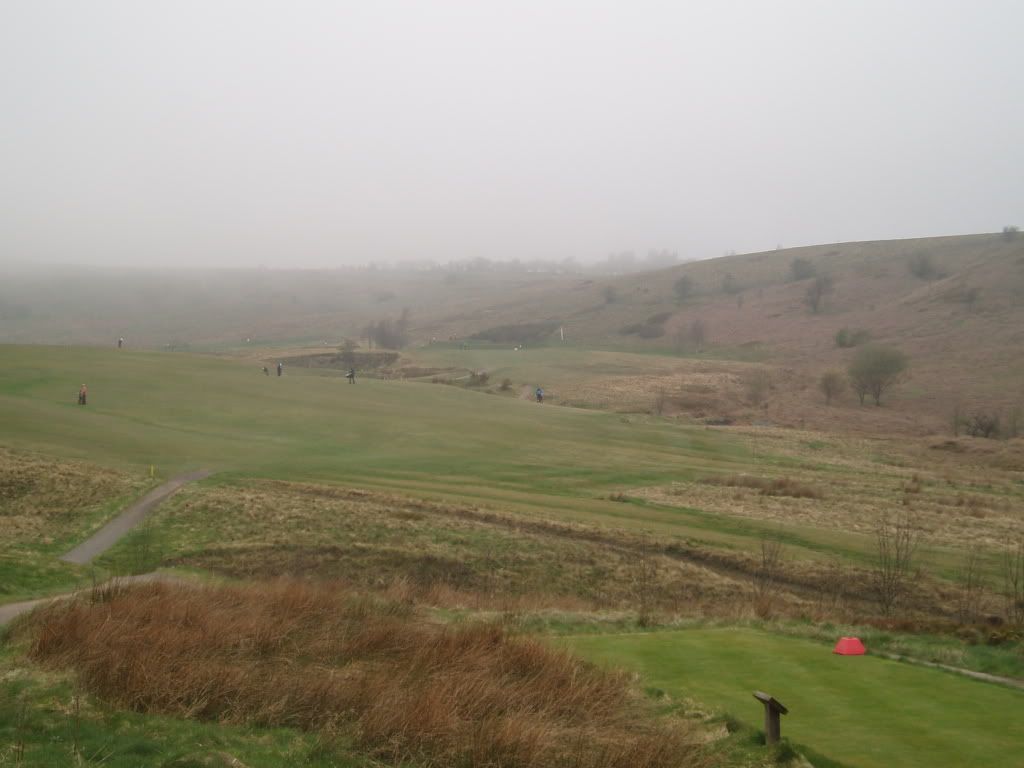
A hard hole! You may just be able to make out a marker post in the far distance. The green sits just in front of that, but you will be unlikely to see it when you are playing your approach shot. First you have to find the right bit of fairway, its big left to right slope pushing the ball to the right. Drive too far and you will end up in the stream which crosses the fairway.
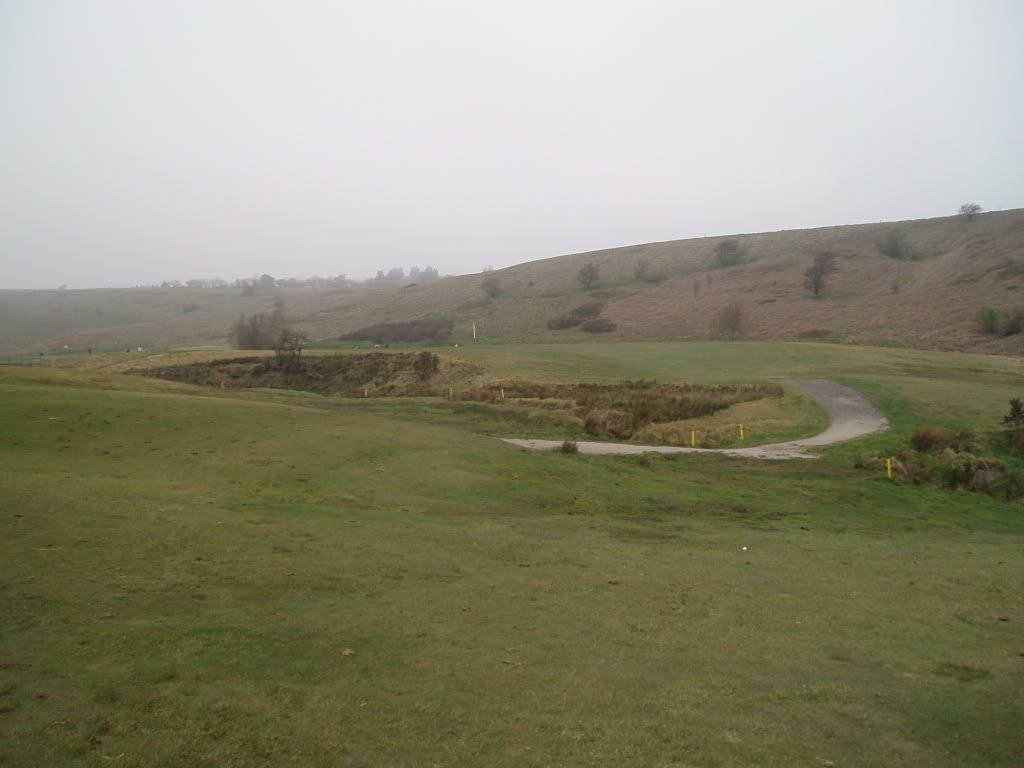
The stream grows in threat the closer you get to it. As you can see, you no longer have a view of the green.
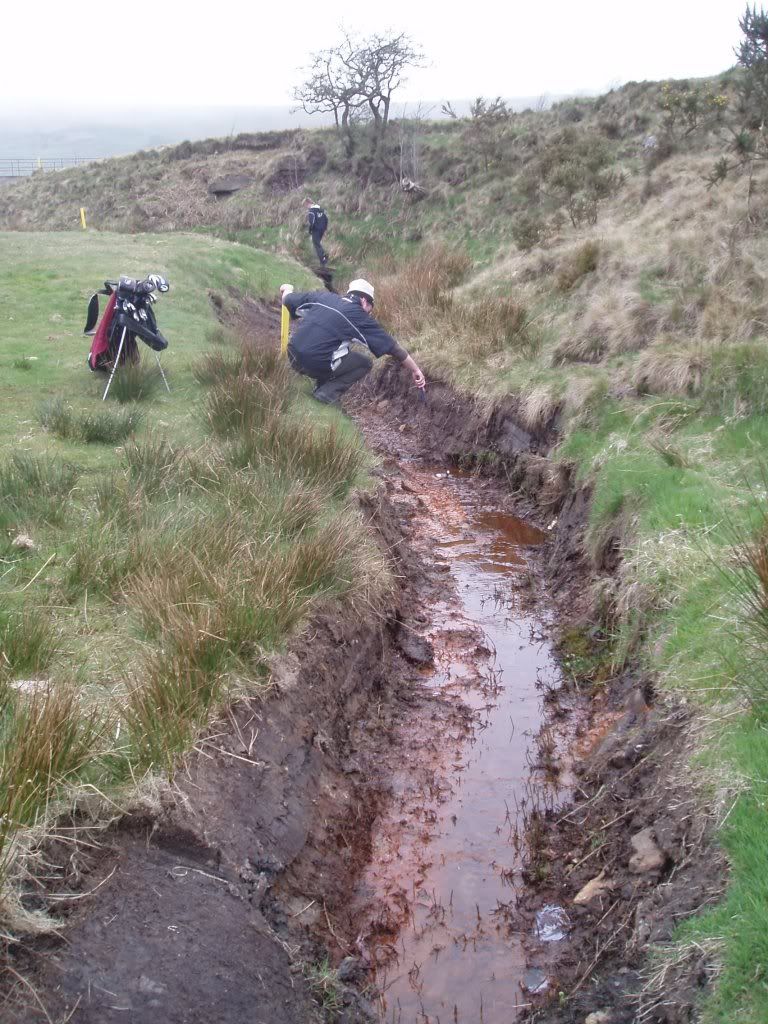
This is a stream to be avoided at all costs!
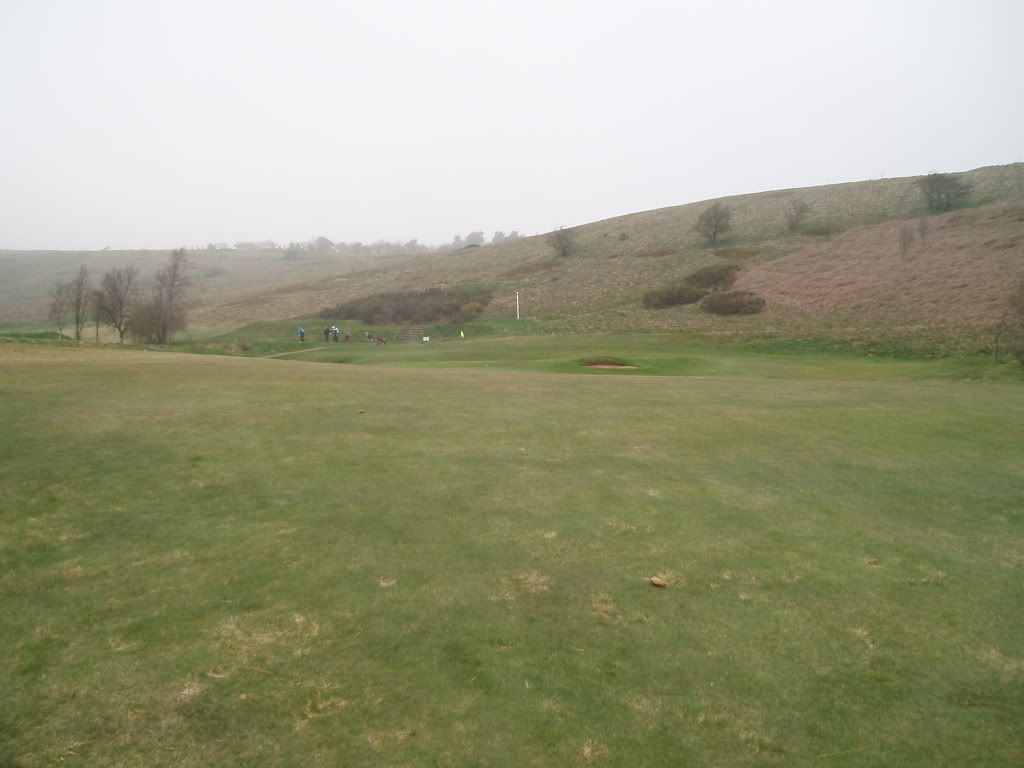
Even from the safety of the far side of the stream it is difficult to judge the approach shot because of the dead ground in front of the green hidden from view by the hump-backed fairway. It played into the wind for us and was unreachable in two.
4th 426 yards par 4
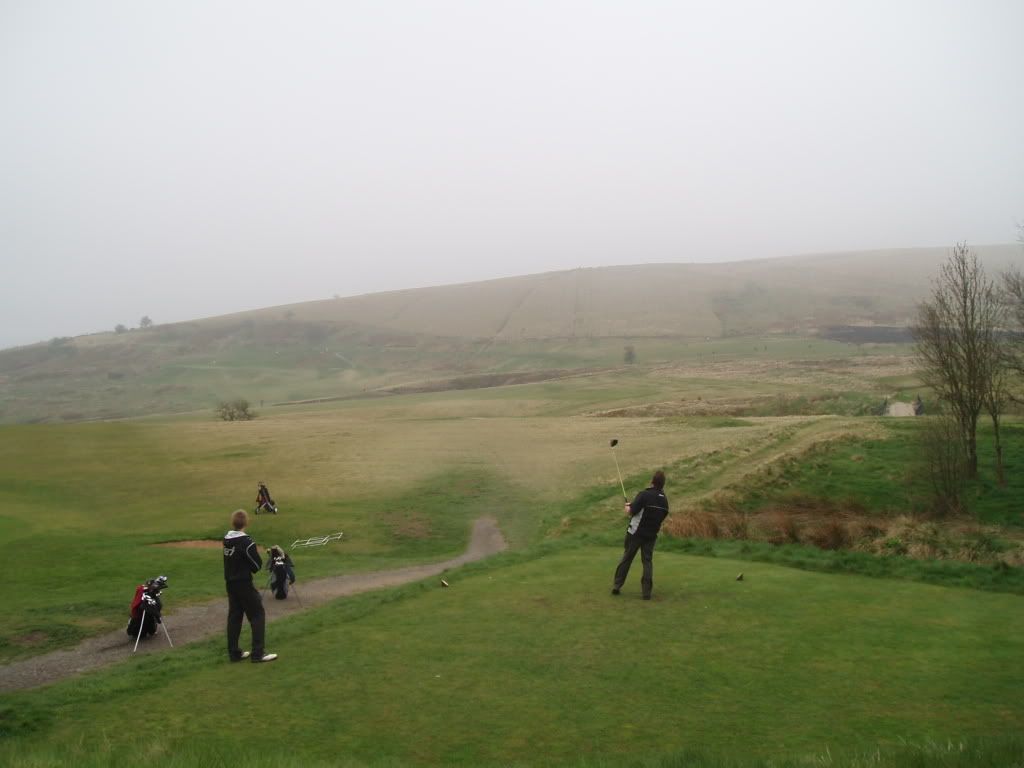
Another sterling long par 4. The drive should easily clear the stream with which we tangled on the 3rd. You can just about make it out above Andy’s club. What you must not do is drive too well or you will run out of fairway and perish in the next stream. Andy judged his drive to perfection.
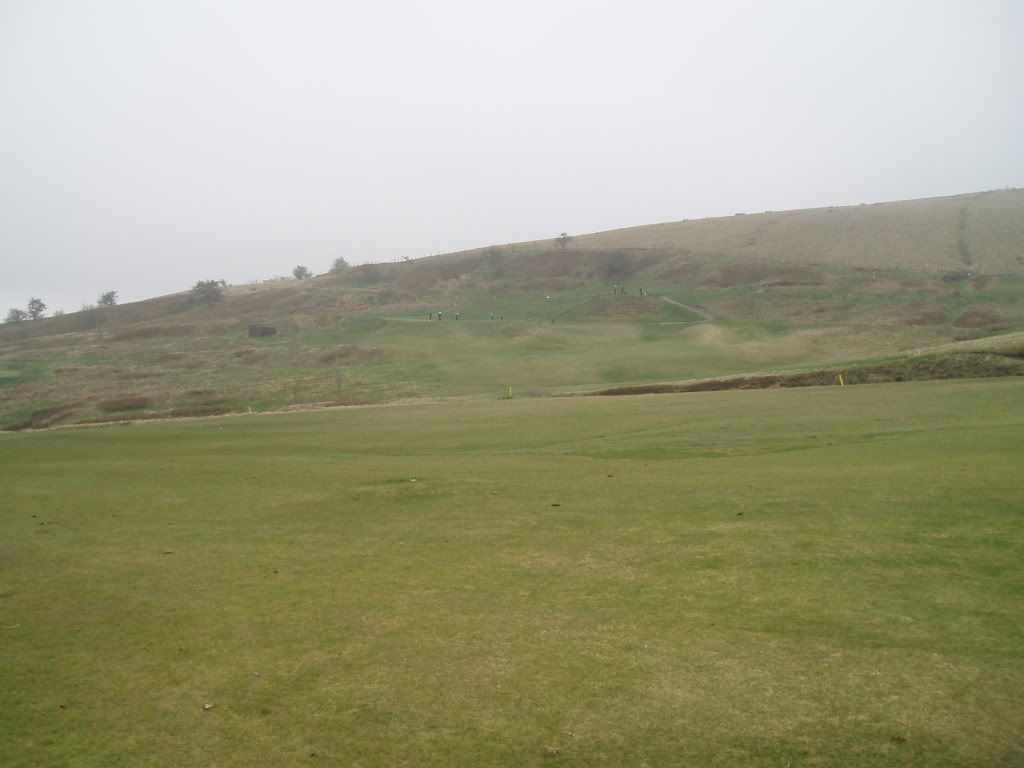
There is the stream. What you cannot tell is just how deep its gully is. You can, however, understand the difficulty of judging the right combination of length and height to hit and hold this ledge green.
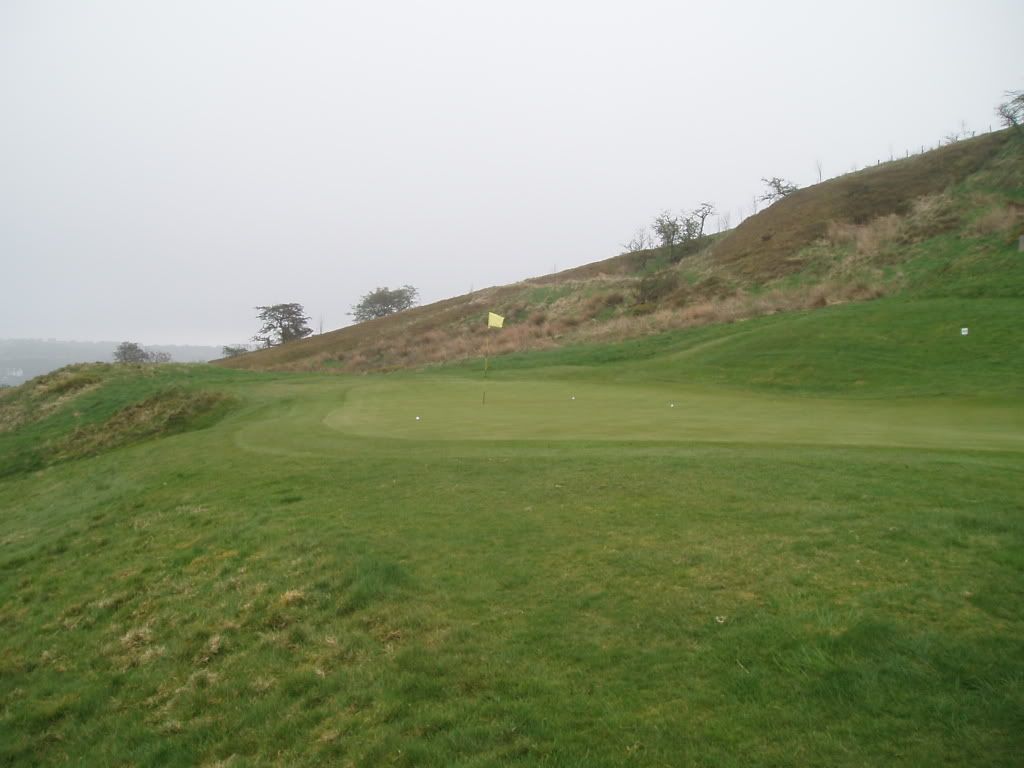
The putting surface is well nigh at right angles to the direction of the hole.
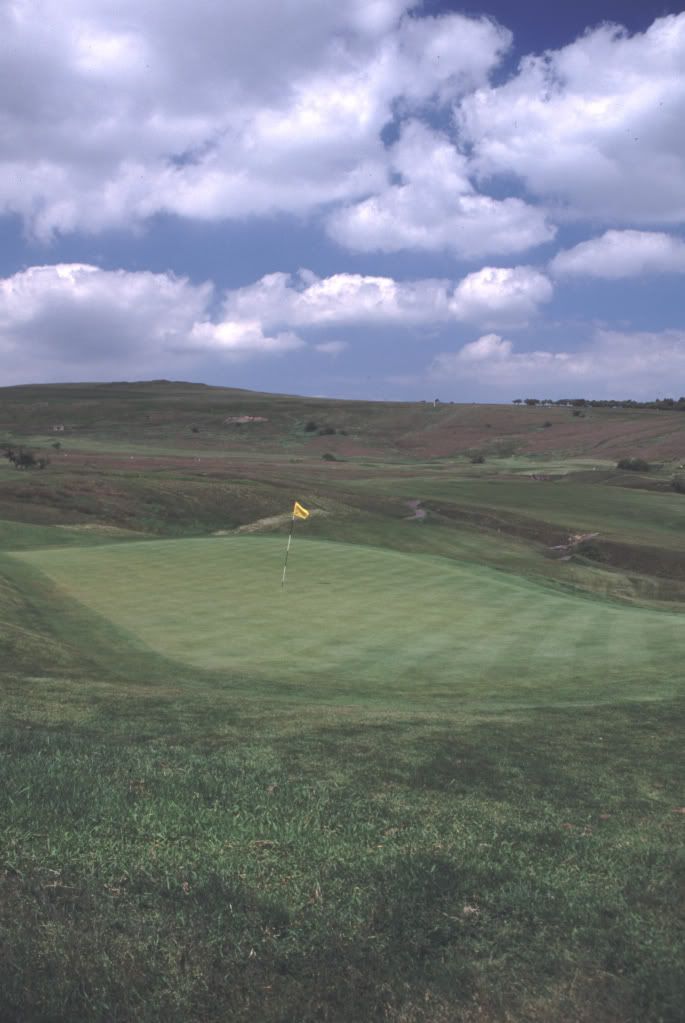
A picture taken when I last played at Halifax, back in the 1980s I should think, looking back down the fairway from behind the green. There is enough movement in the putting surface to make long putts quite testing.
5th 392 yards par 4
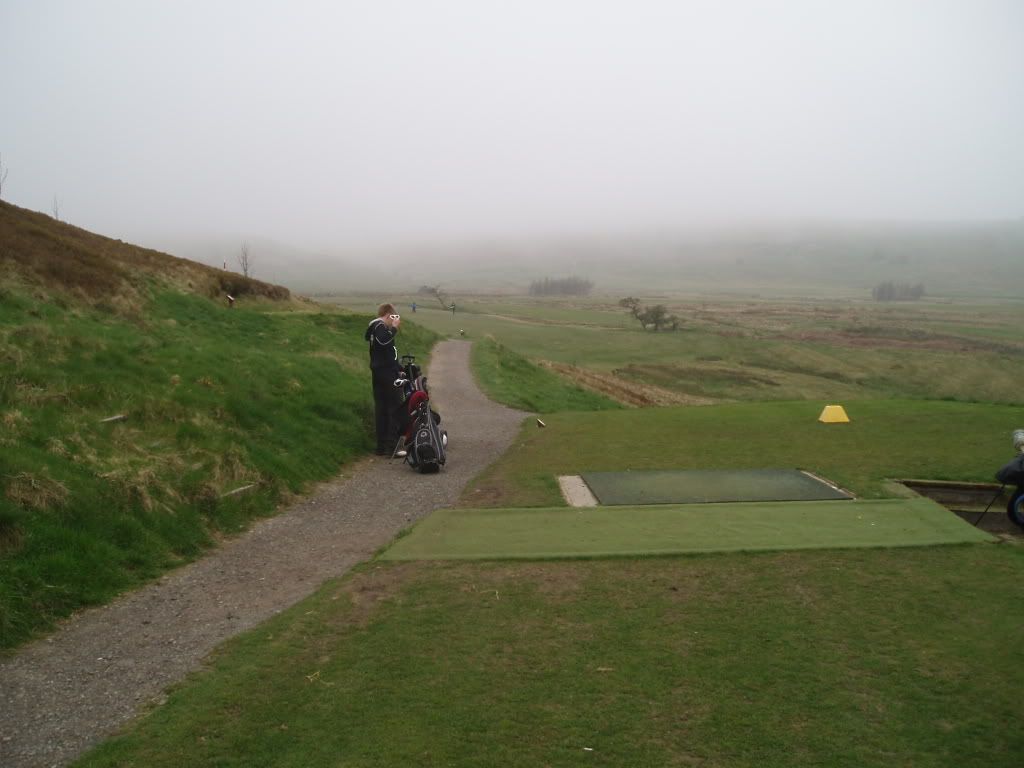
Another excellent hole. The tee in this photograph is well forward. The further back you go the harder it is to pick the right line. Essentially the stream runs up the right side of the fairway for the first 240 yards or so. There is a strip of fairway to its right, but that increases the dog-leg, making the hole play much longer. You might be able to clear the stream where it cuts across the fairway 150 yards from the green, but the dangers are many.
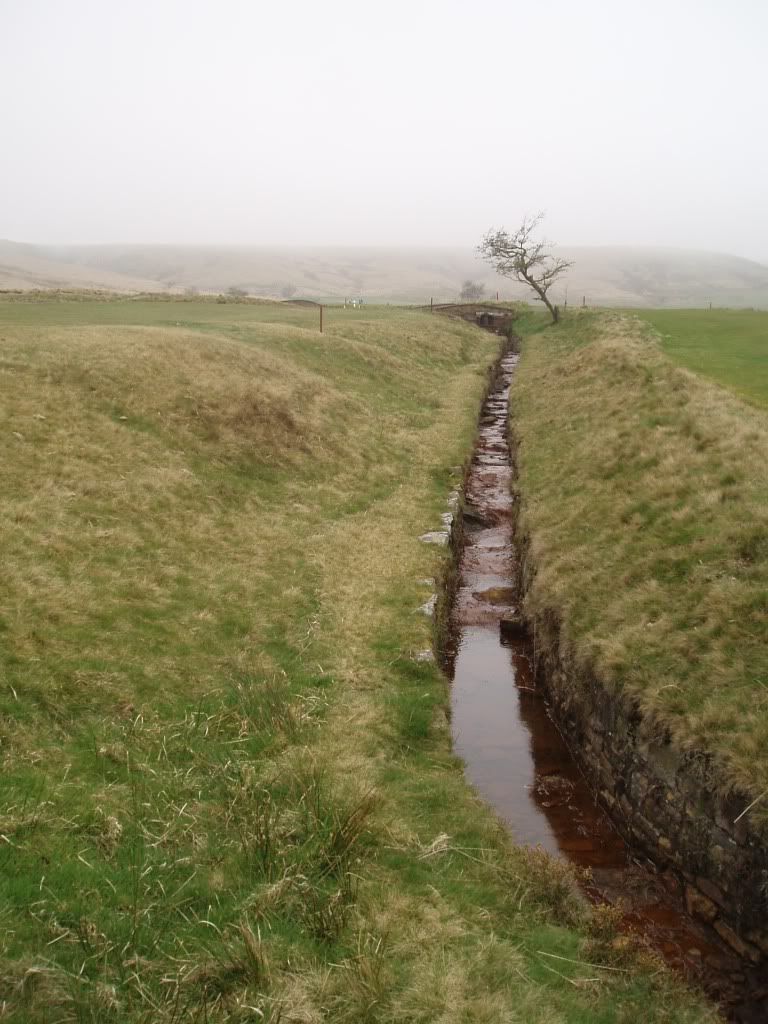
Again, do not go in the stream.
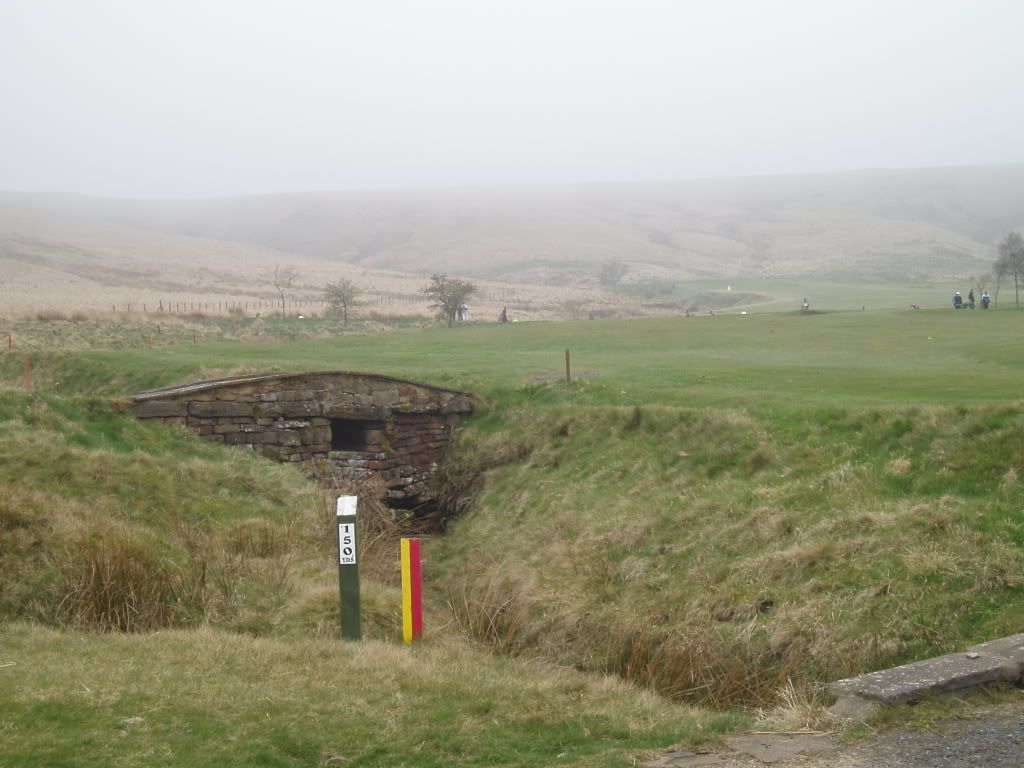
It takes a lot more than 240 yards of carry to clear the stream with its grasping banks and stone bridges.
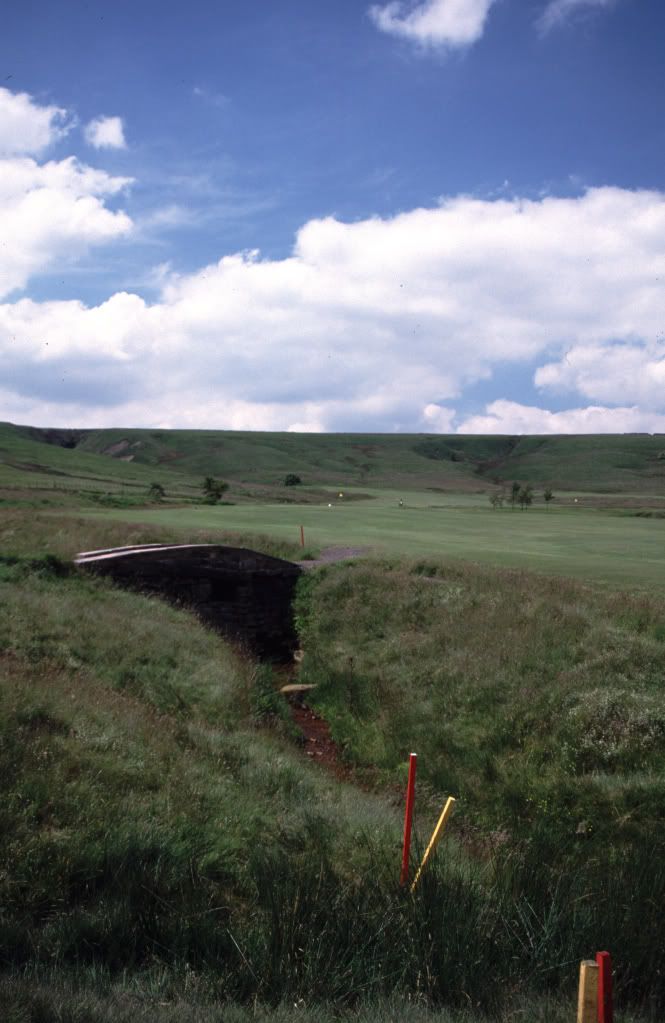
You can just make out the green in the distance, the left hand of the two flags.
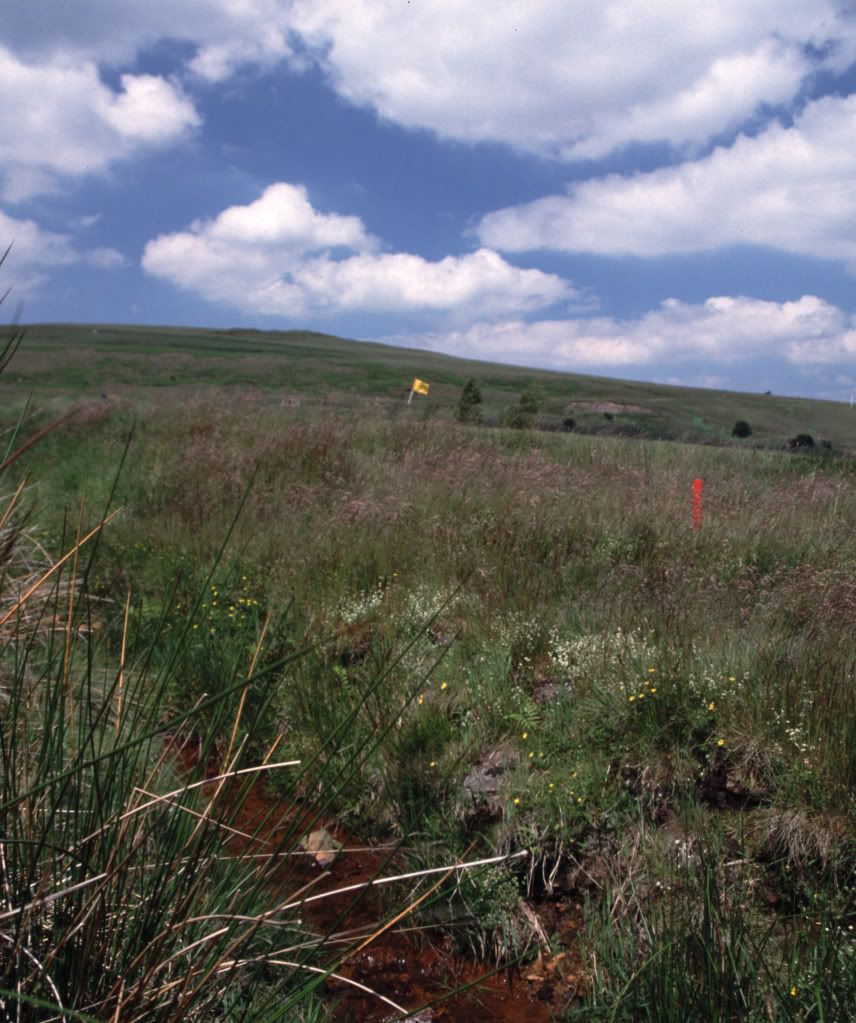
And the stream does not go away, running up the left edge of the fairway for the 150 yards or so to the green.
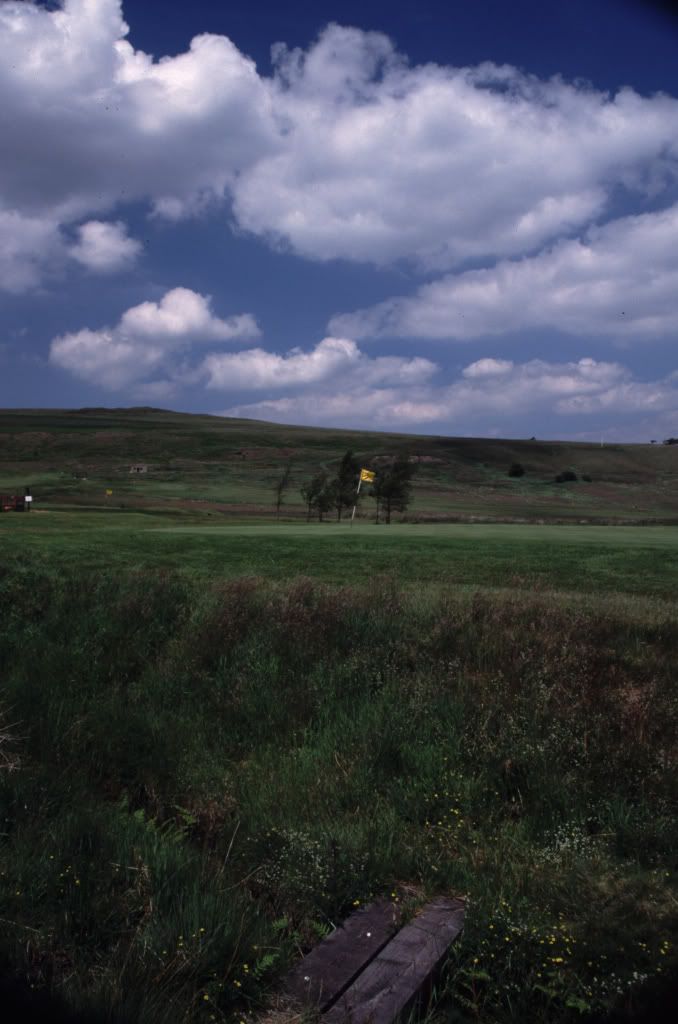
Fortunately the green itself is comparatively uncomplicated, but the 5th is, nonetheless, stroke 1.
6th 375 yards par 4
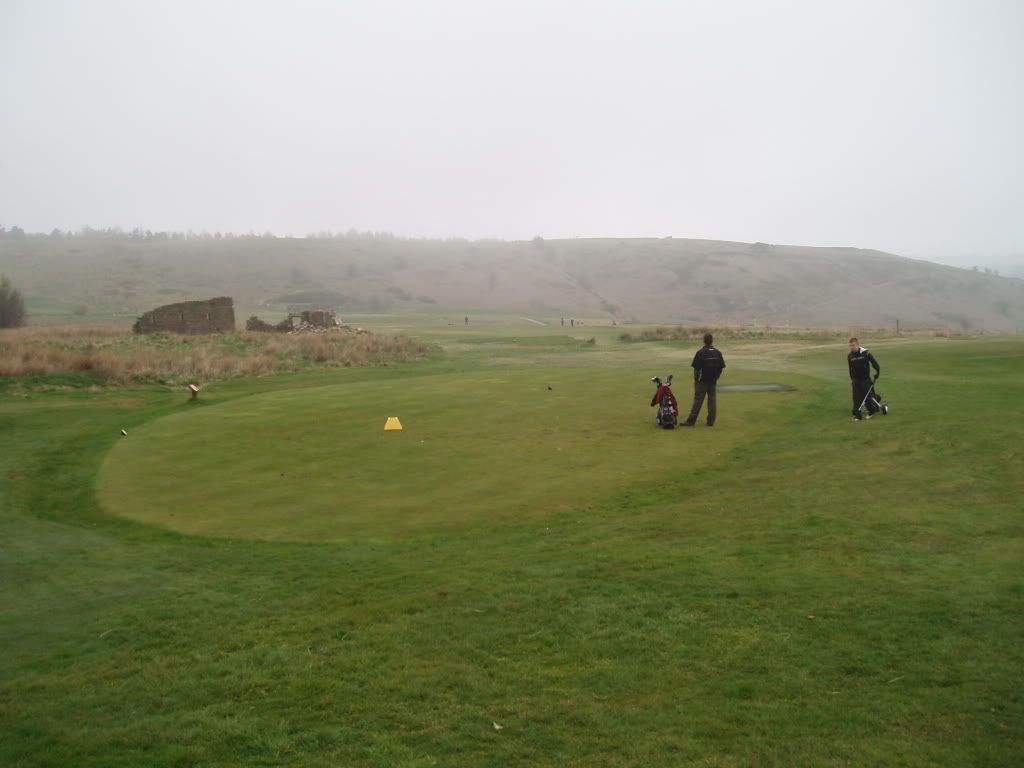
The drive is straightforward. Note the sort of rough they grow at Halifax!
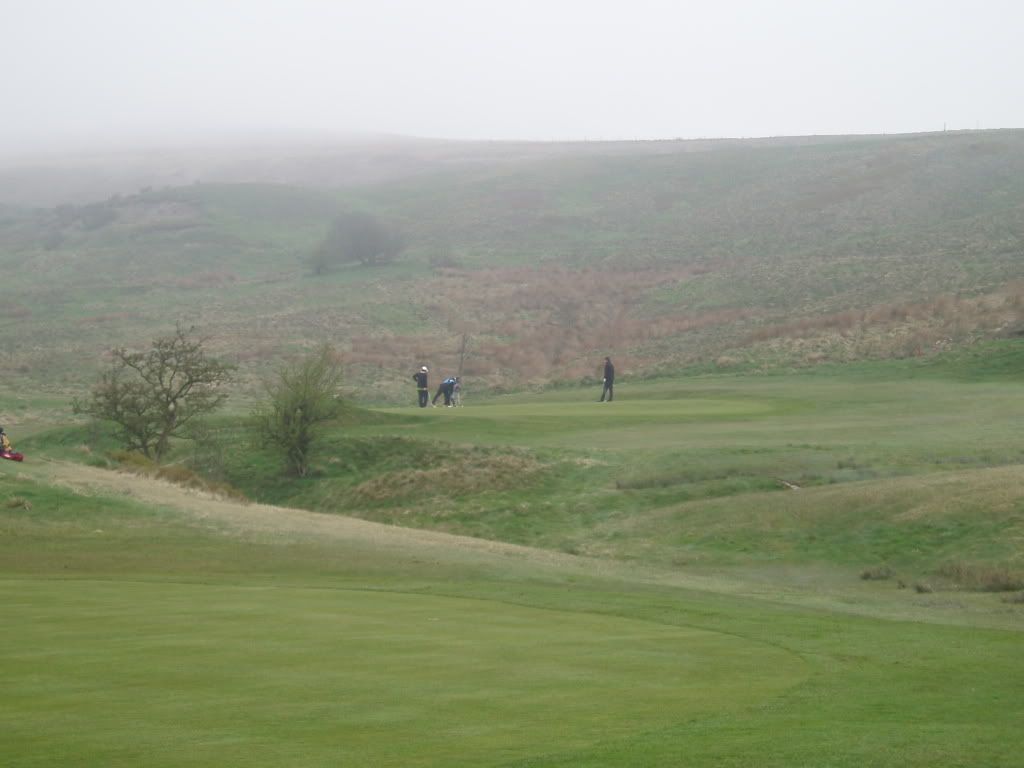
Yet again, the approach is played over a stream and gully, and there is a slight false front to kill the weak approach.
7th 122 yards par 3
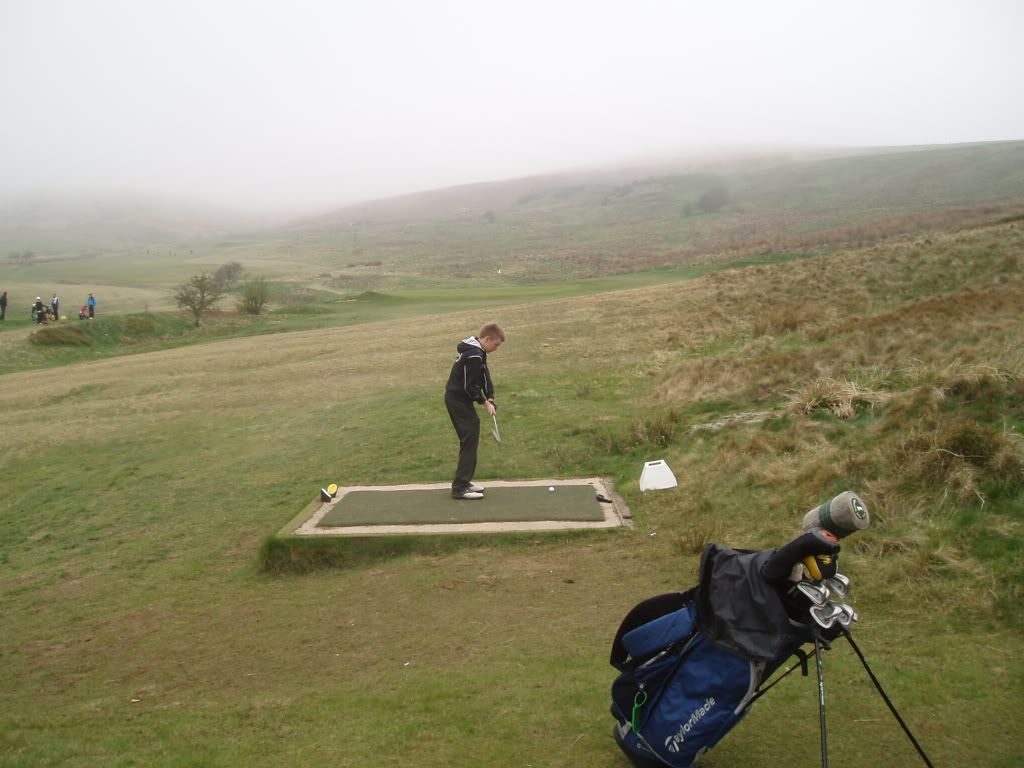
Another tiddler, with another false front and a slight downhill slope to the back third of the putting surface. The ball will very likely break from right to left on landing.
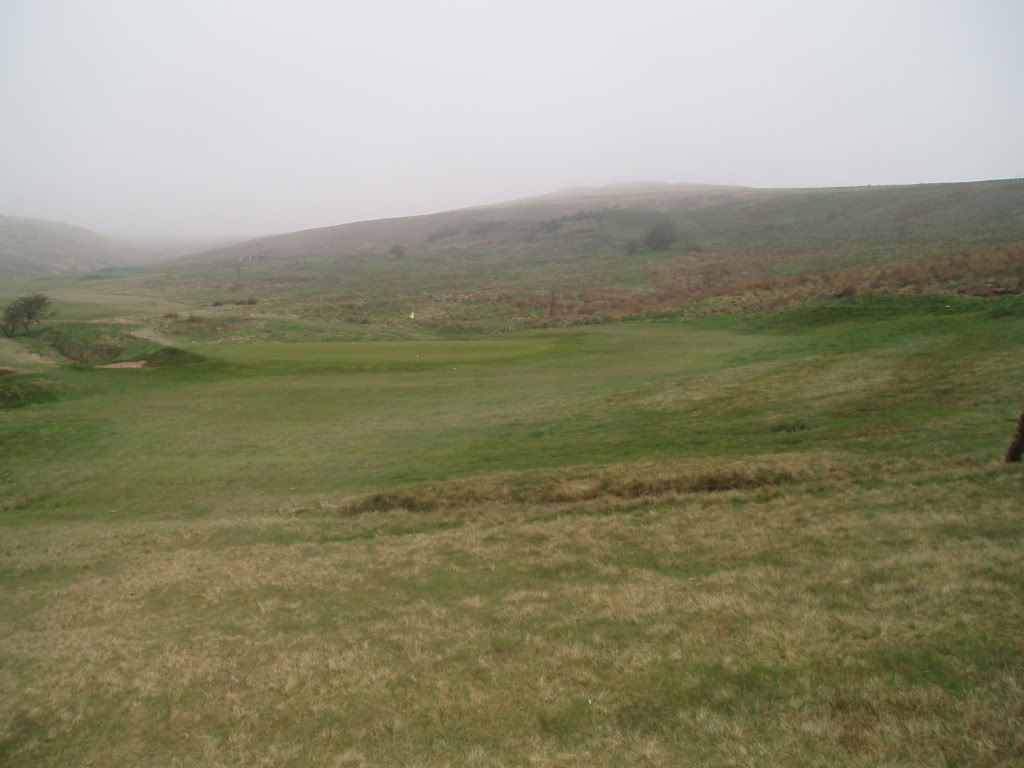
On its website, the club mentions that they have restored a number of bunkers previously grassed over. On the whole the bunkers are few in number, pretty shallow and somewhat dwarfed by the bigger features of the landscape.
8th 371 yards par 4
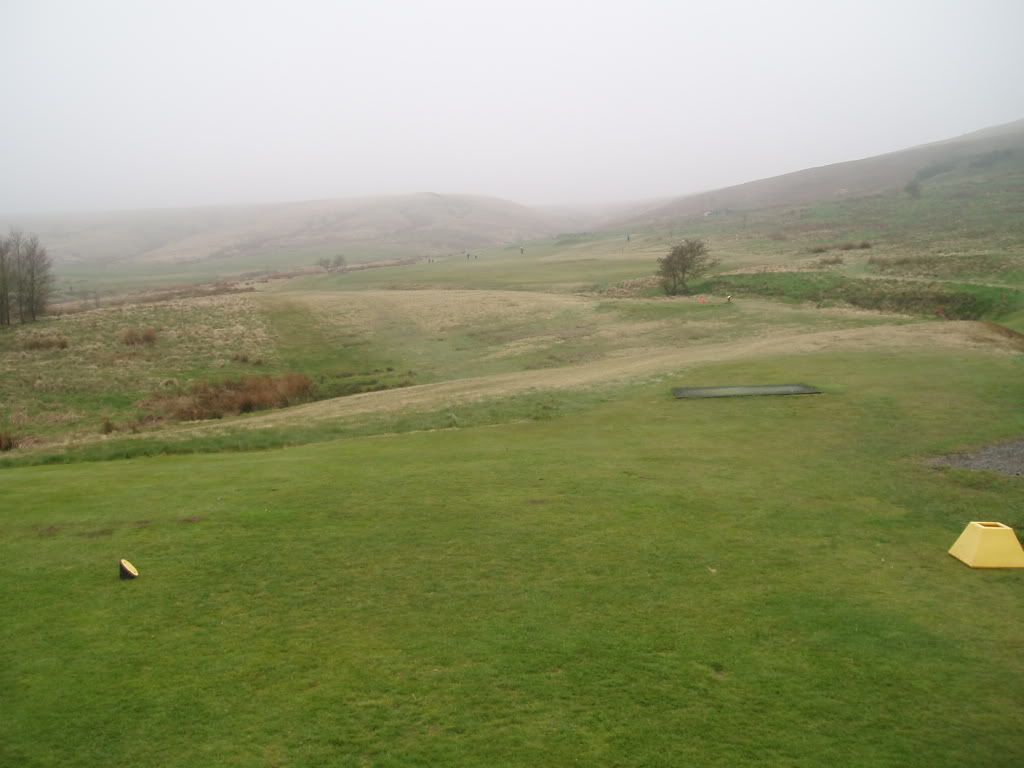
A routine drive from this tee, but much more of a handful from tees on the hillside to our right. Then you are driving towards a fairway curving to the right but sloping down to the left. As the second shot is played up a significant hill good distance from the tee is an advantage.

You fancy that a ball played to the right front of the green will feed nicely onto the putting surface. Someone (Braid?) put this vast hummock exactly in Position A to prevent that very shot.
9th 339 yards par 4
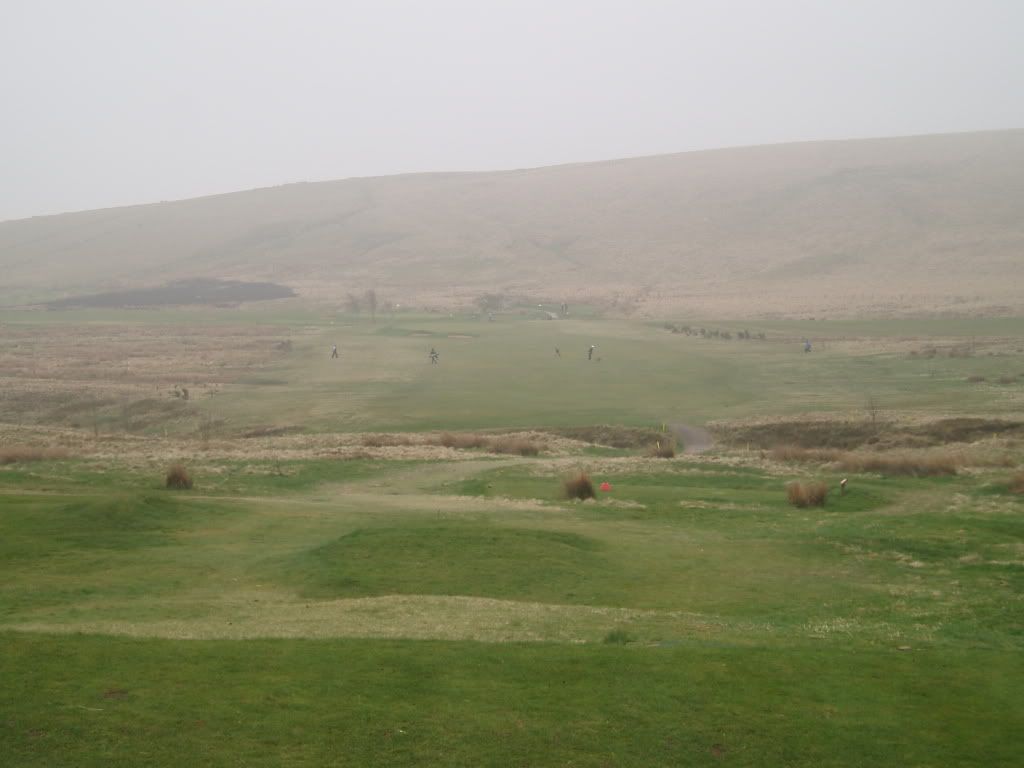
This was not an inconsiderable carry in the days when topping a shot was thought to be the worst crime in golf. With today’s equipment long hitters might well drive the green.
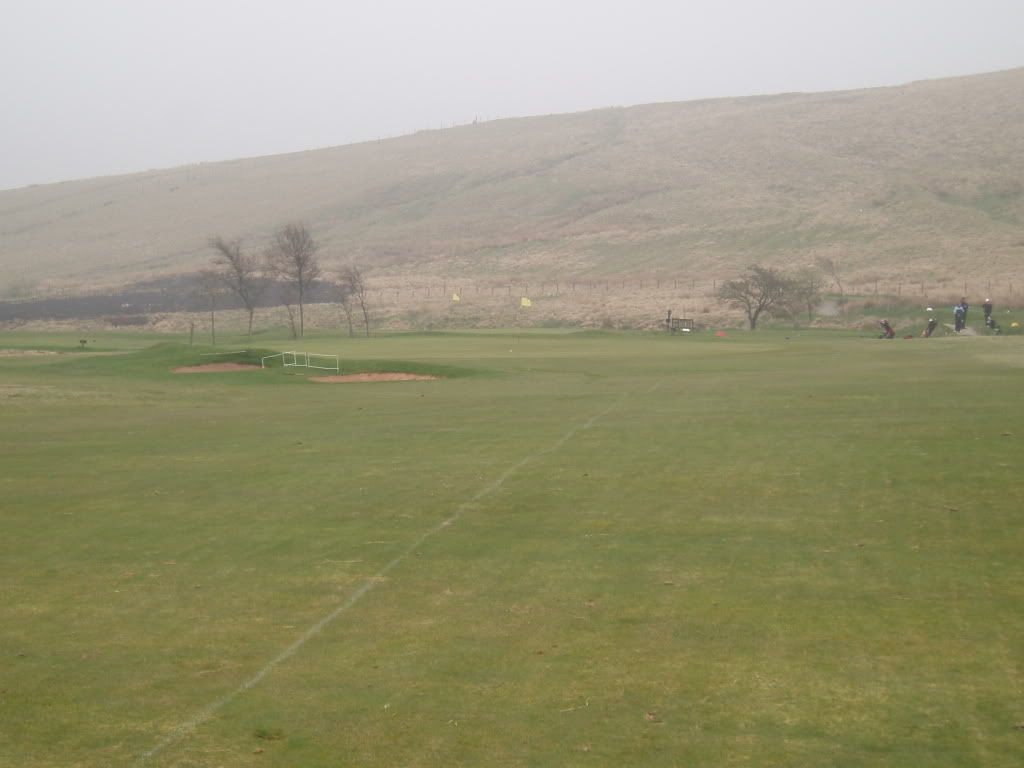
With a flat green the 9th is one of the easiest holes on the course.
10th 299 yards par 4
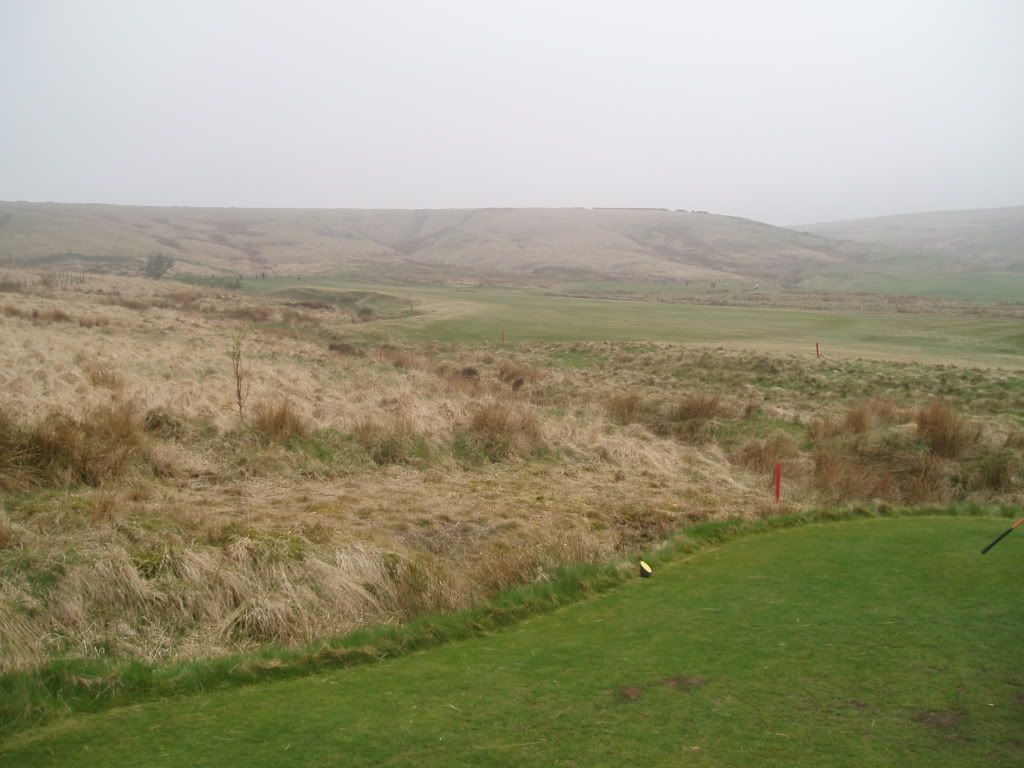
A drive to a right-to-left curving fairway, just the thing for an old left-hander’s slice. The rough is again notably punitive.
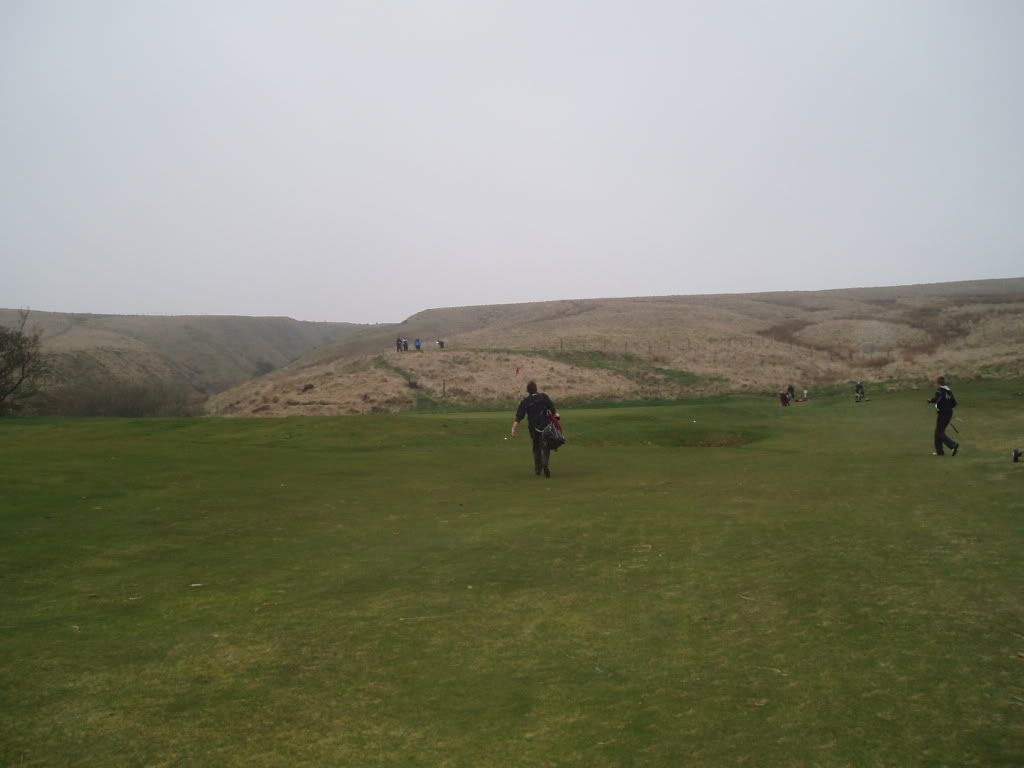
There is just enough rise up to the putting surface to thwart the weak approach. There is also a marked step in the green. Note the players on the 11th tee. Stupidly, I forgot to photograph the prospect from there – an inviting drive.
11th 333 yards par 4
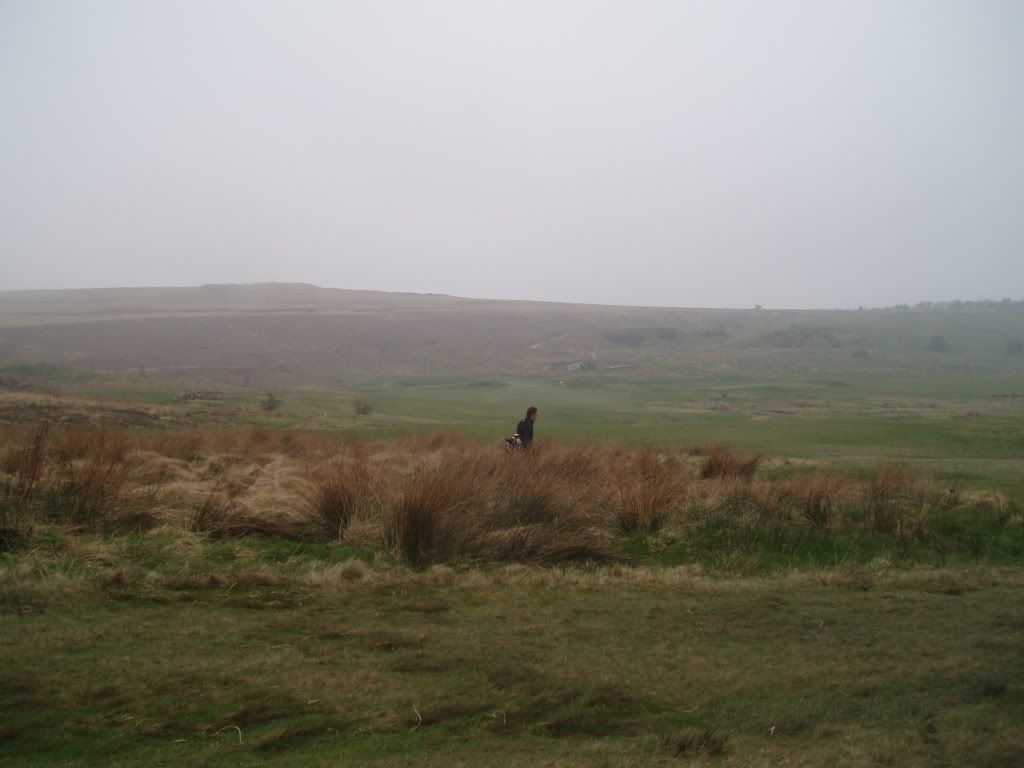
The rough on the left of the fairway is serious. Andy found his ball. My Callaway is still in there somewhere.
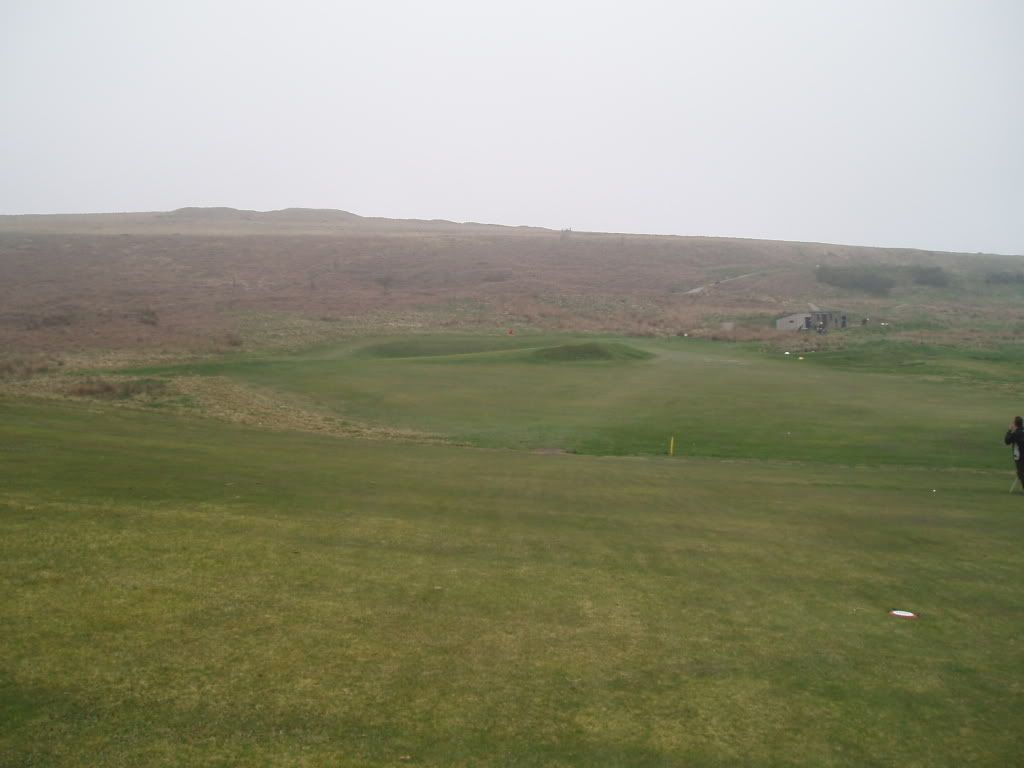
Yet again the fairway is interrupted by a stream. In its later stages the fairway leans sharply to the right meaning that many approaches have to be played up and over that mound on the front right of the green.
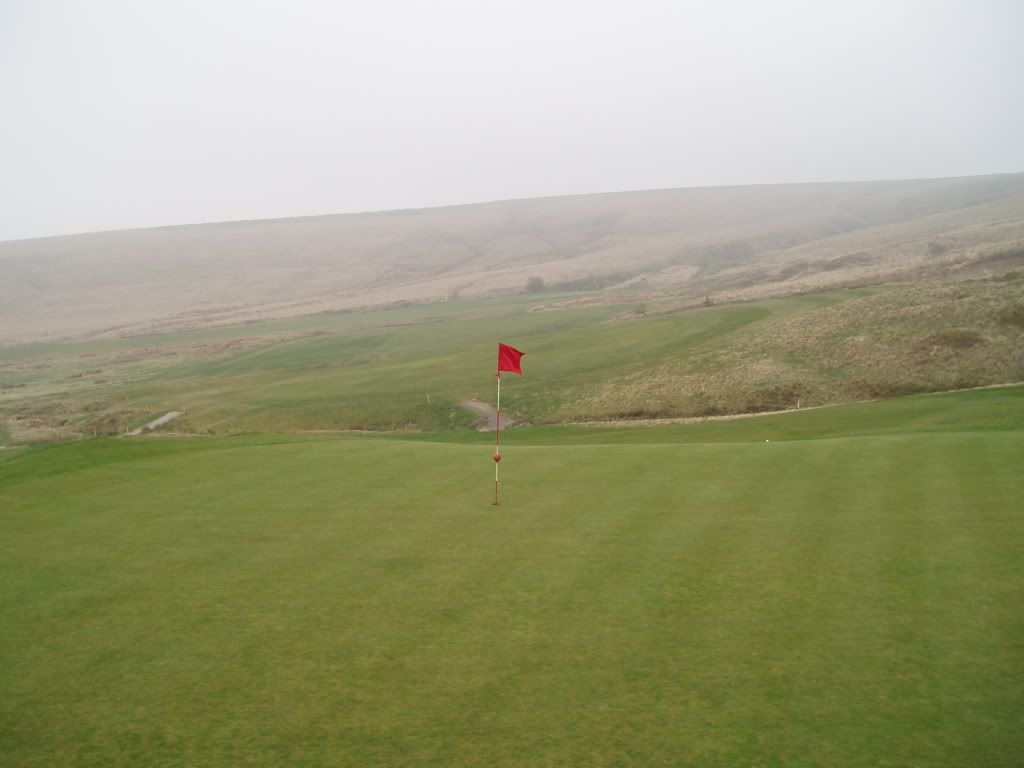
The pronounced slope of the later stages of the fairway and the punishment awaiting should you tangle with the stream are evident in this view from behind the green.
12th 265 yards par 4
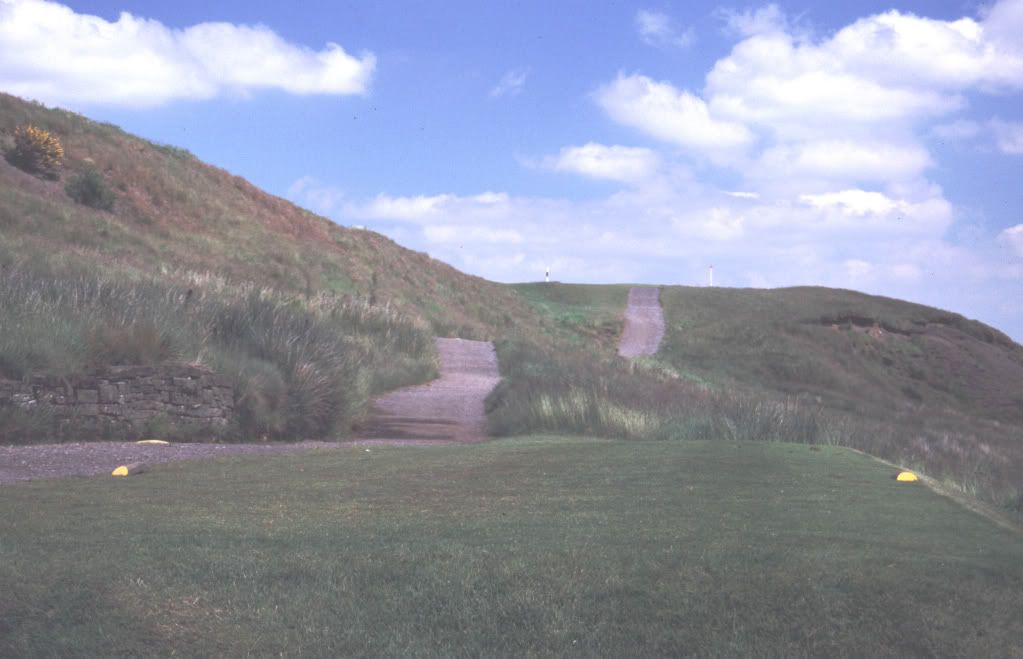
It may be a blind tee shot, but it seems perfectly obvious where you should go.
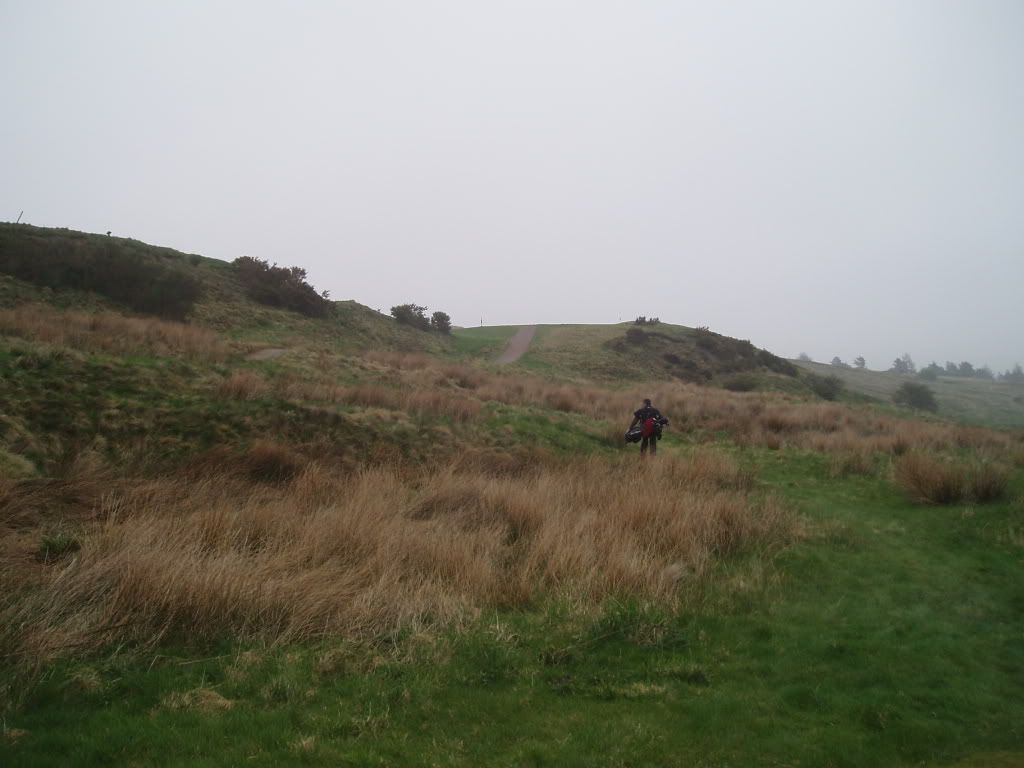
As we kept reminding ourselves, topping was the worst sin of its age and severely punished.
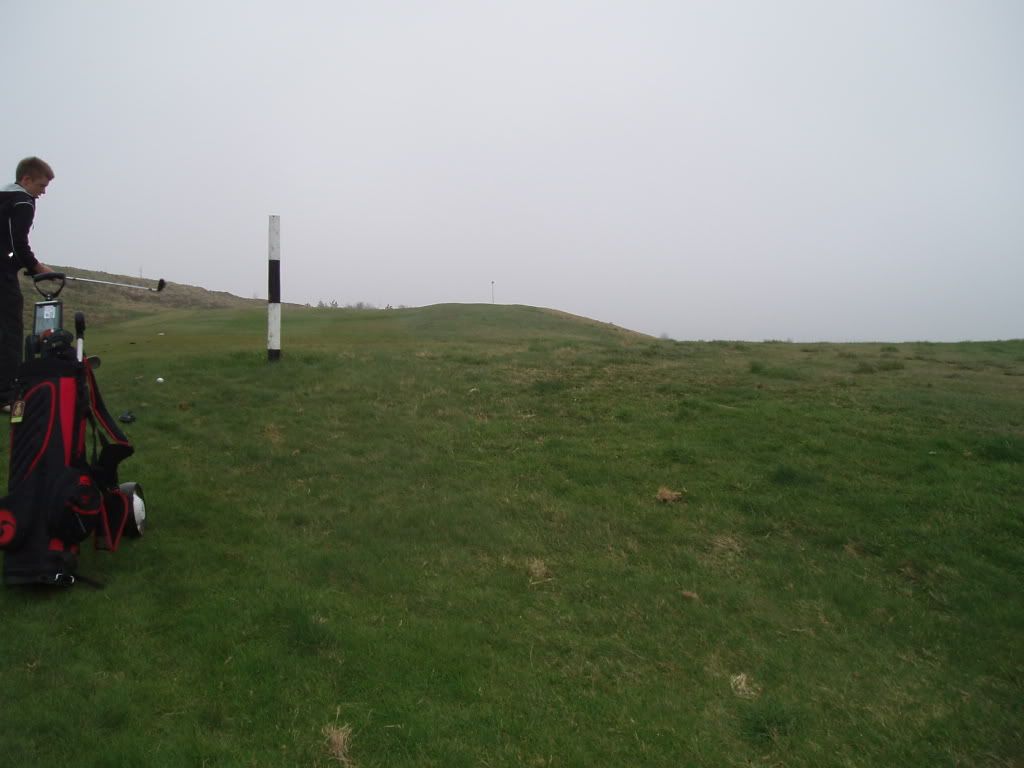
You think you’ll see the green when you reach the first marker post. Wrong!
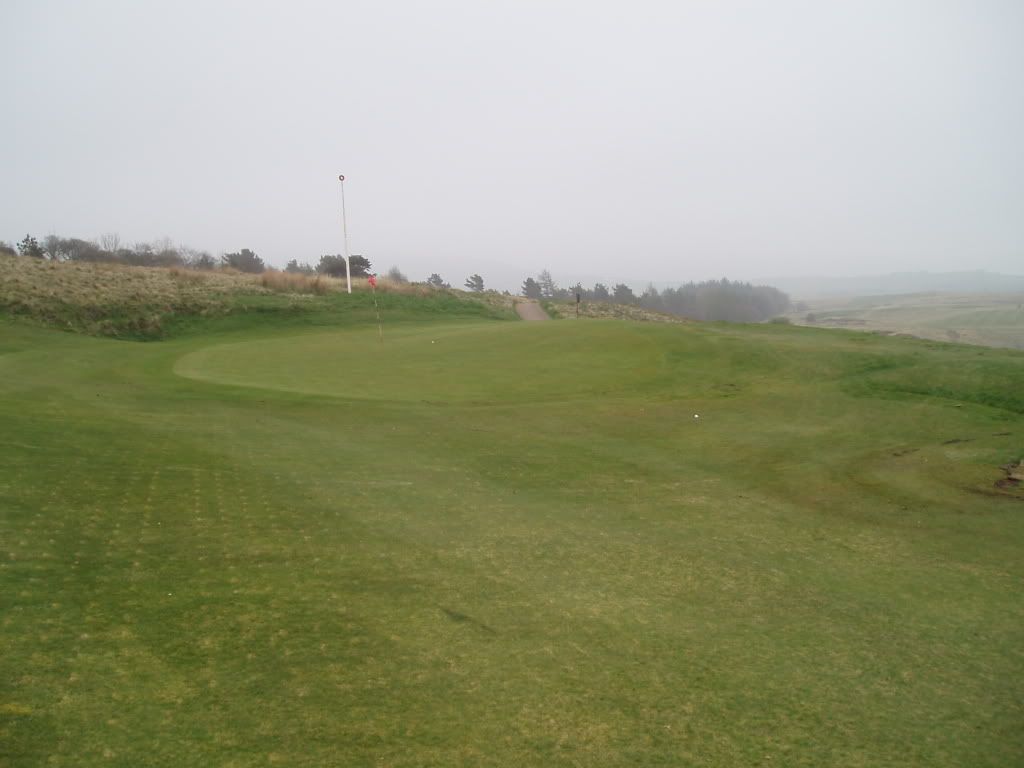
Only when you reach this spot do you realise why the first marker post was on the left. There is a long left-to-right leaning bank on the left of the latter part of the fairway, the green sloping strongly from right to left. You are dead if you miss on the right!
13th 525 yards par 5
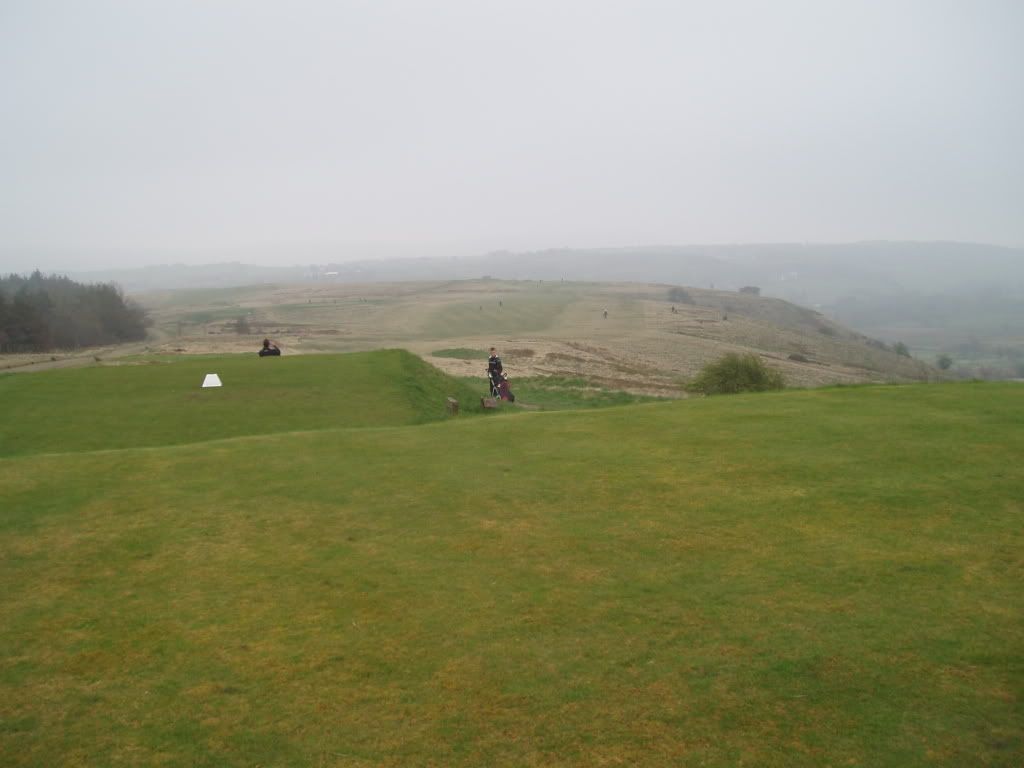
You are now out on the high ground of the moor with an inviting drive to a broad fairway. You cannot escape the wind up here!
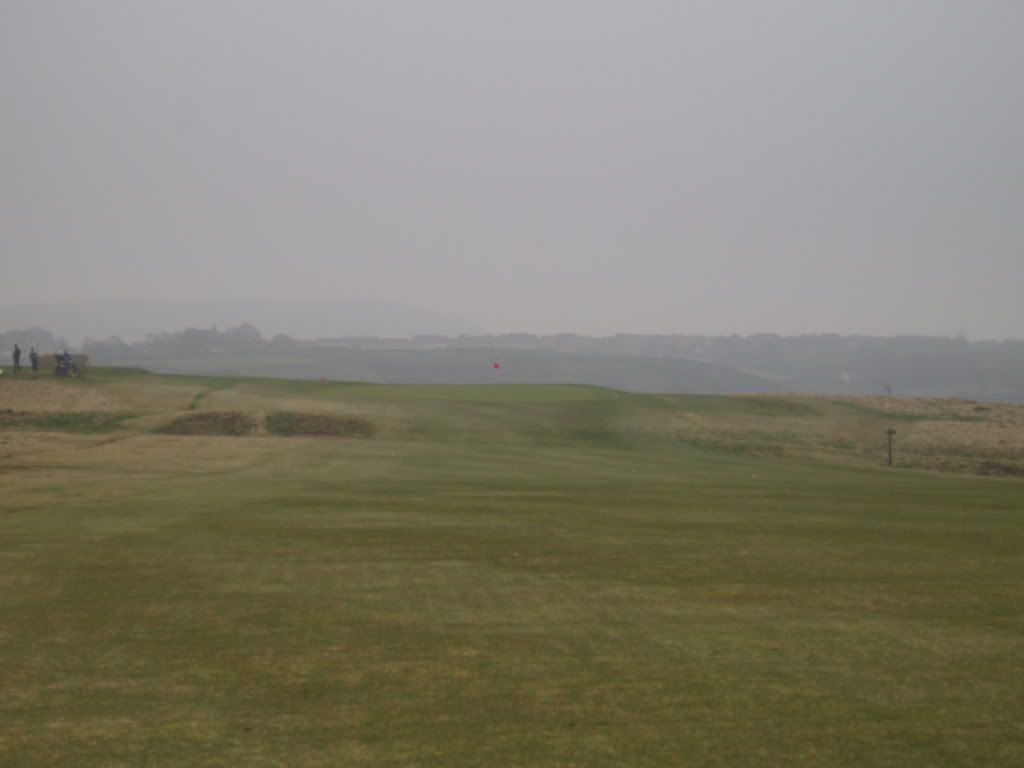
The two bunkers draw attention to the low ground in front of the green, which otherwise foreshortens to view and would lead to underclubbing. Young Levett had no difficulty finding the green in two, his eagle putt missing by a fraction of an inch.
14th 180 yards par 3
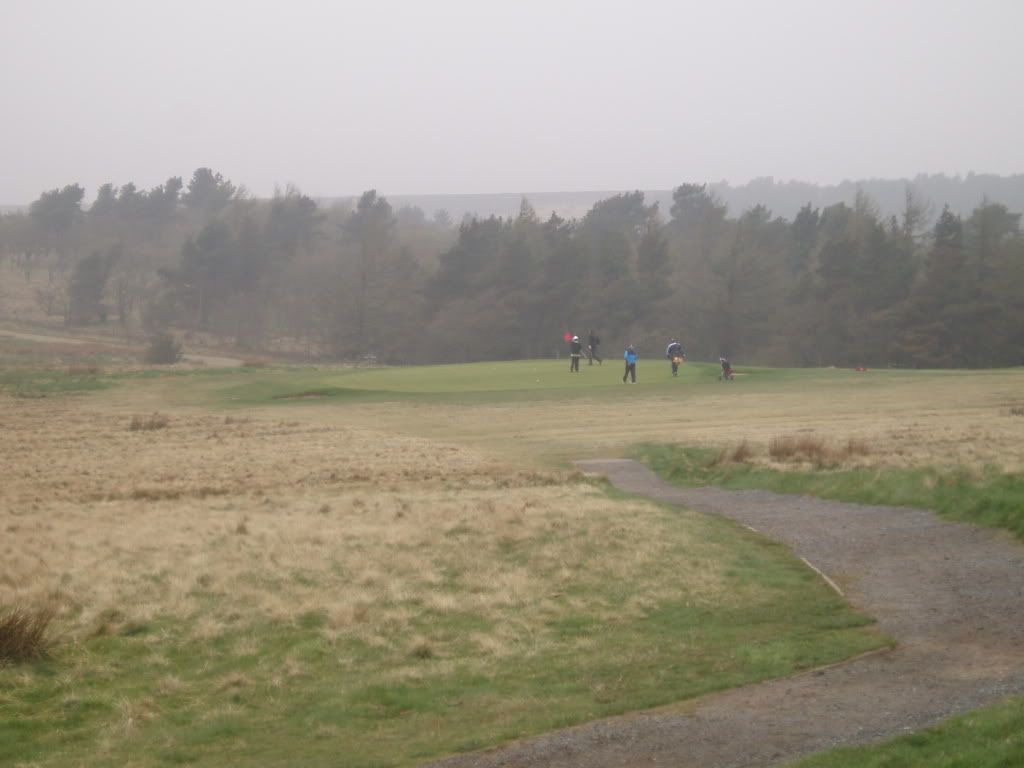
The least remarkable hole on the course, but it is very exposed to the wind.
15th 501 yards par 5
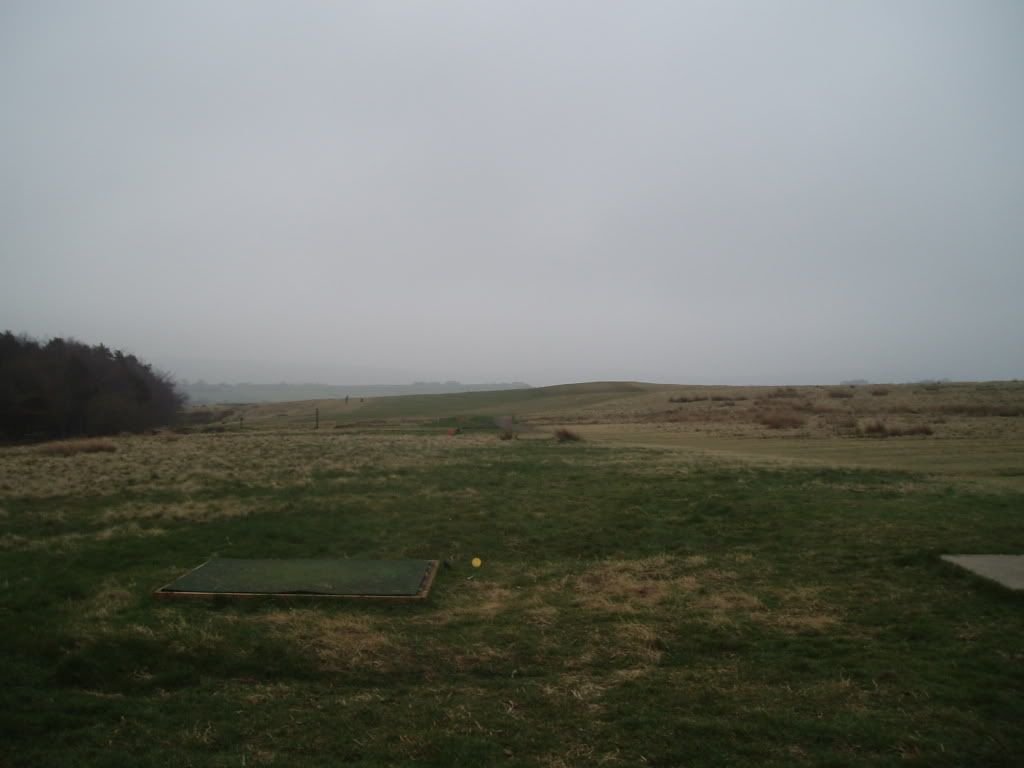
An archetypal moorland hole, the drive being blind over a ridge.
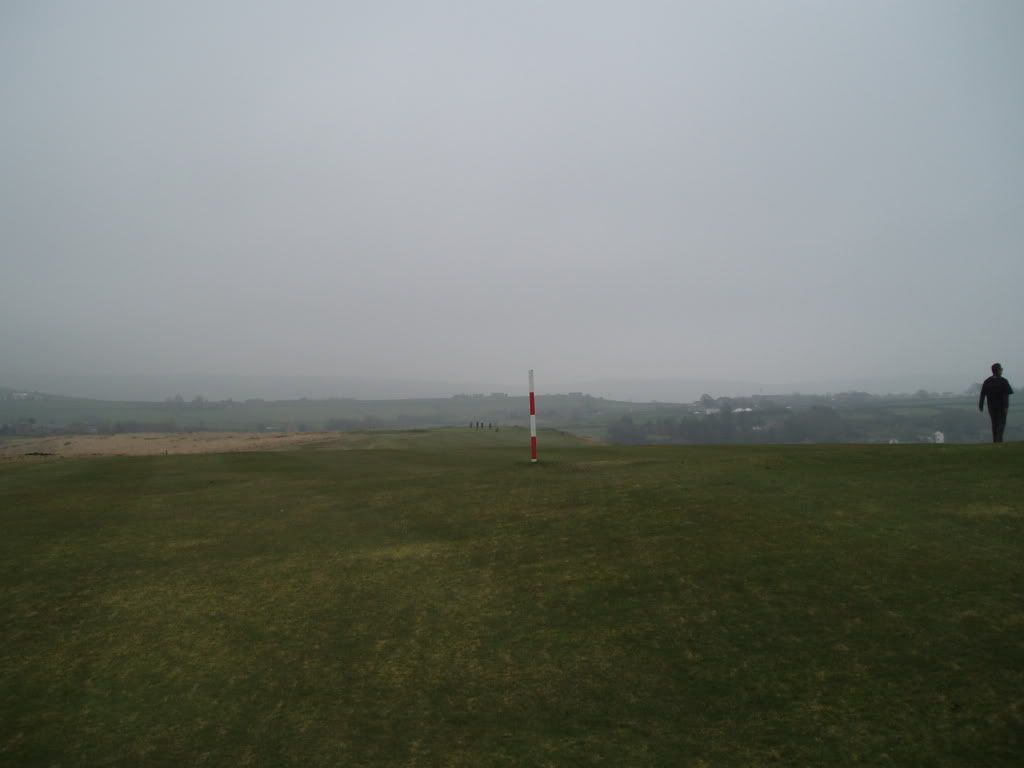
Having reached the brow of the hill all is revealed, a long straight hole playing up to a skyline green.
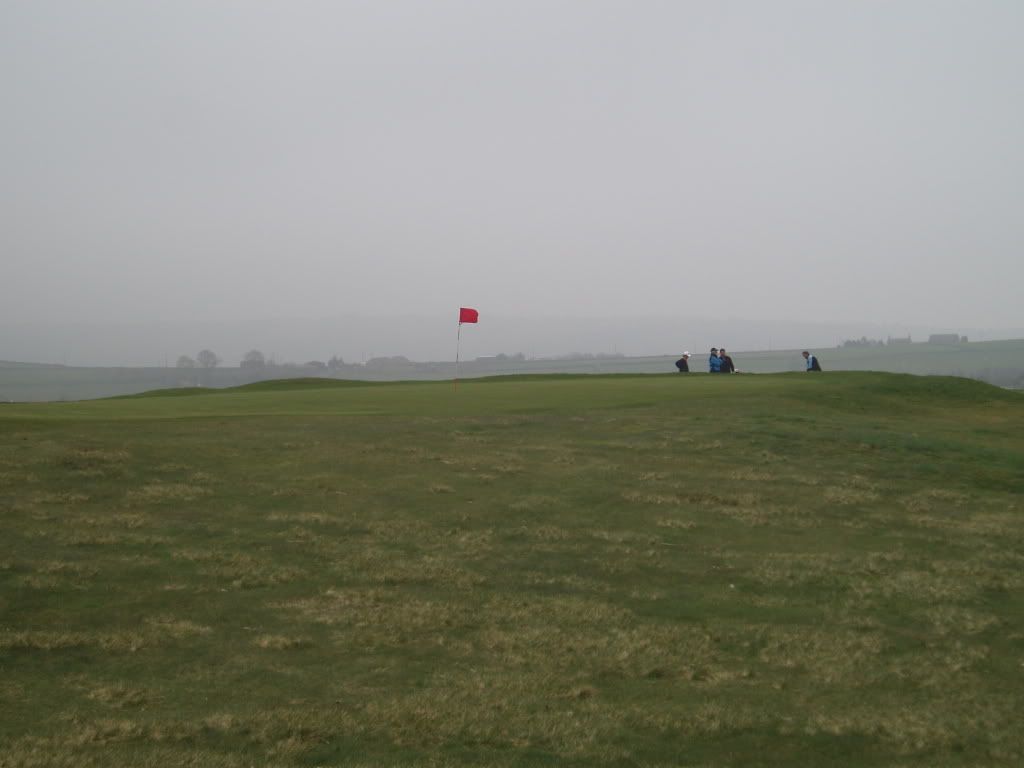
16th 390 yards par 4
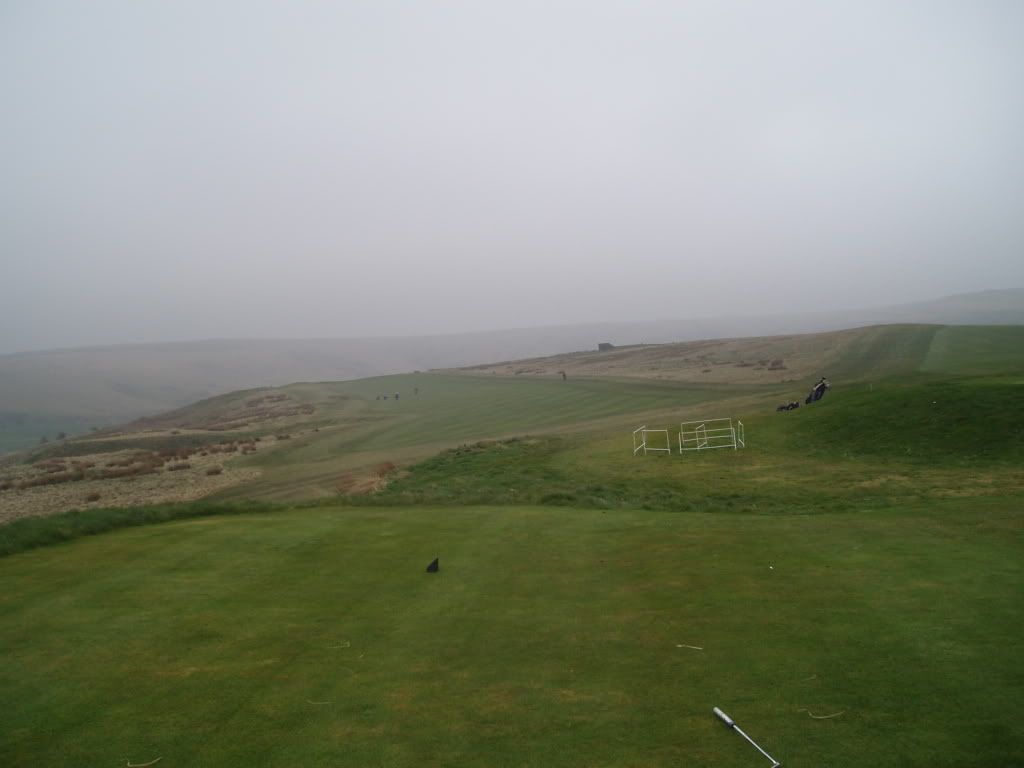
A beautiful hole with a big right-to-left slope to the fairway.
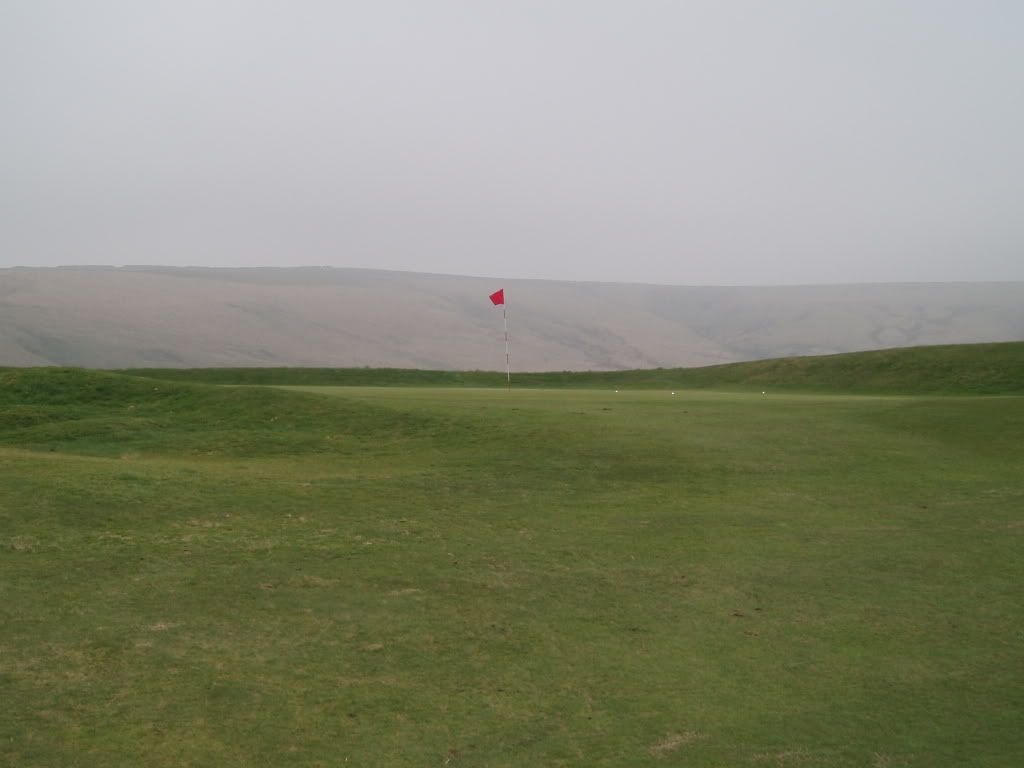
There is a gentle front-to-back slope to the armchair green.
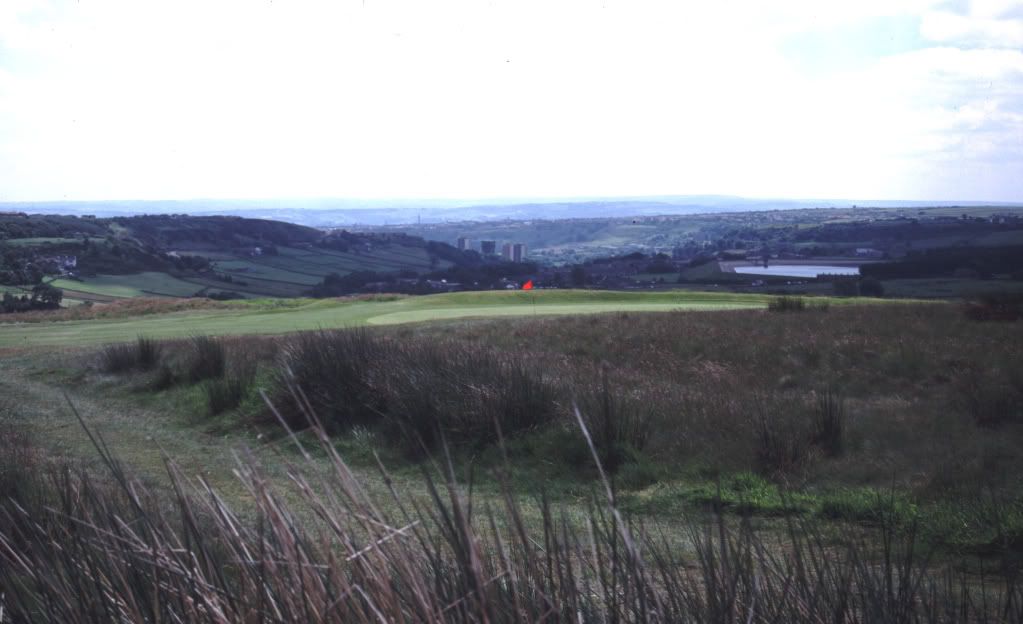
Only occasionally are you reminded of the outside world.
17th 178 yards par 3
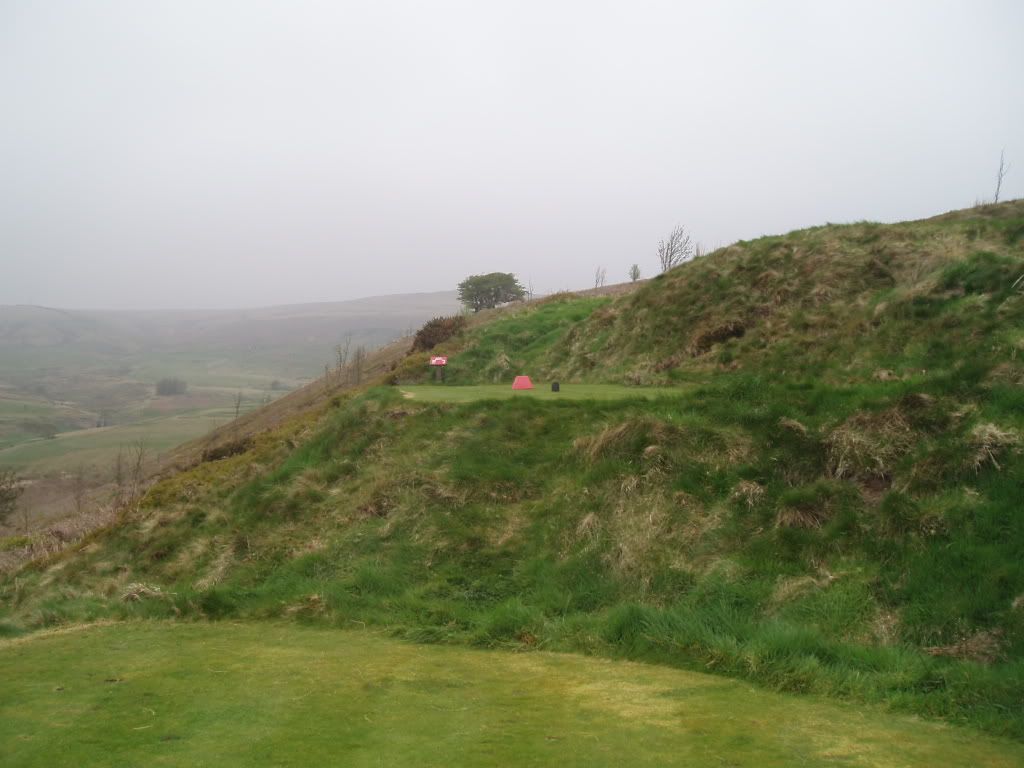
Here is the ladies’ tee.
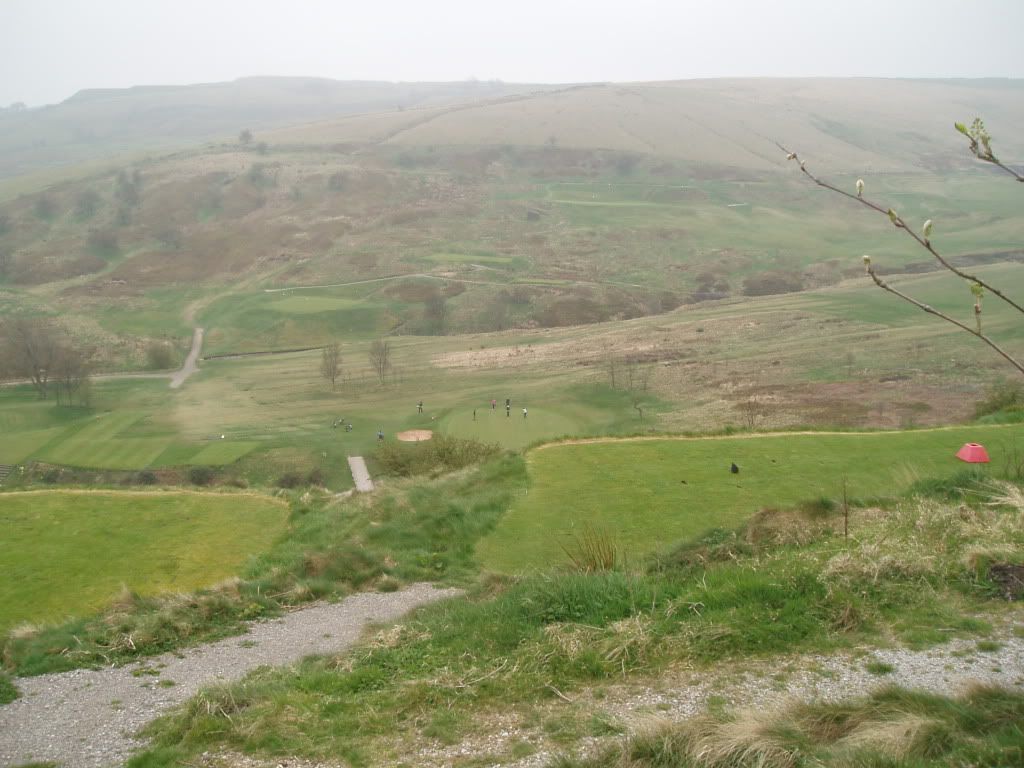
And this is what they are aiming at.
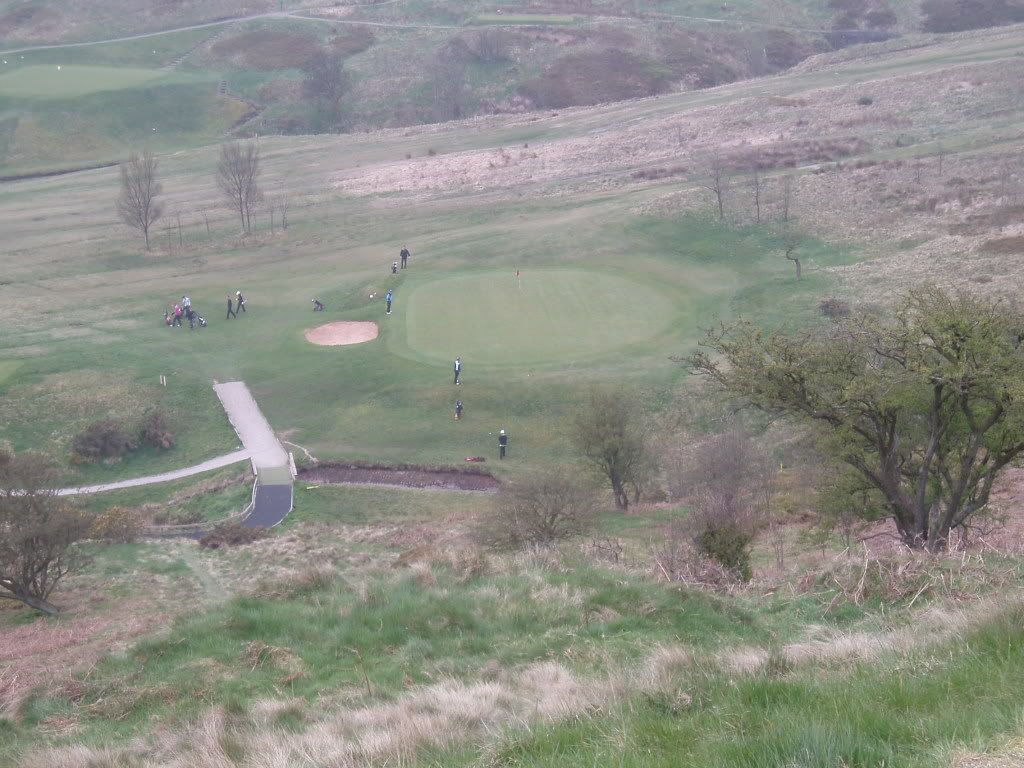
And there is even the indignity of a watery grave should you come up short. It is a remarkable hole, almost as far down as it is along. Obviously swirling winds are hard to judge and how much allowance should be made for the huge drop is difficult for the first-time visitor.
18th 429 yards par 4
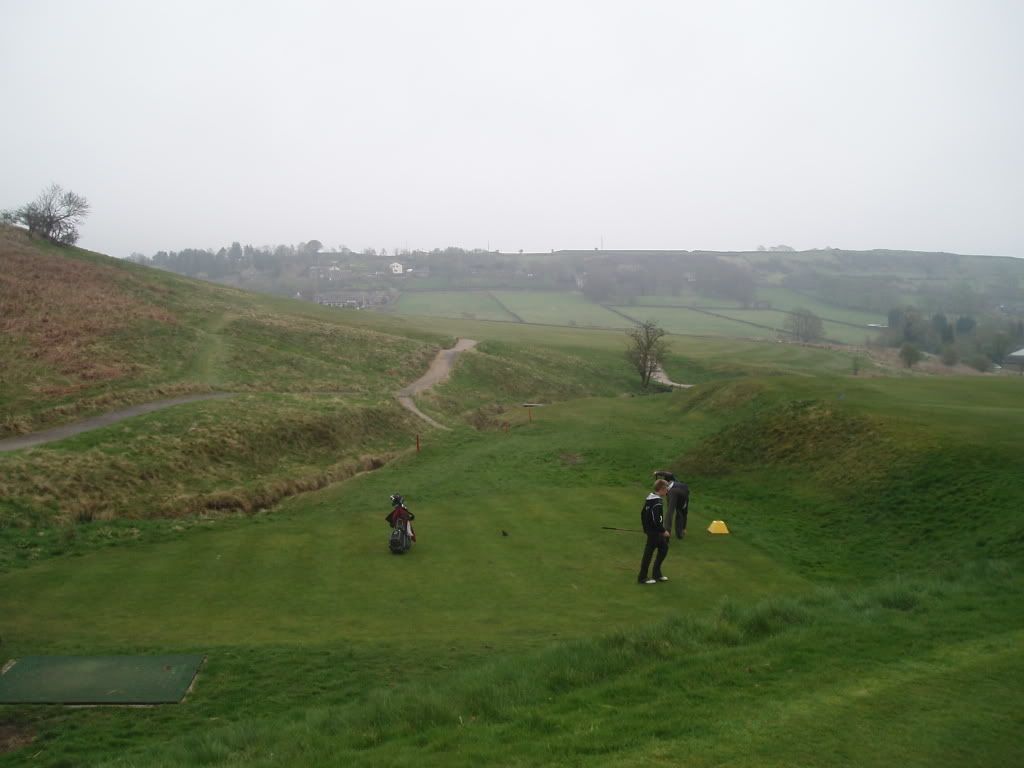
It is a perplexing drive from this low tee (I am standing on the white tee, from which the view is much clearer). The hole clearly curves to the left, the fairway sloping to the right. How much the hole curves and how much allowance should be made for the slope is hard to say. Bite off too much and there is some terrible rough on the hillside!
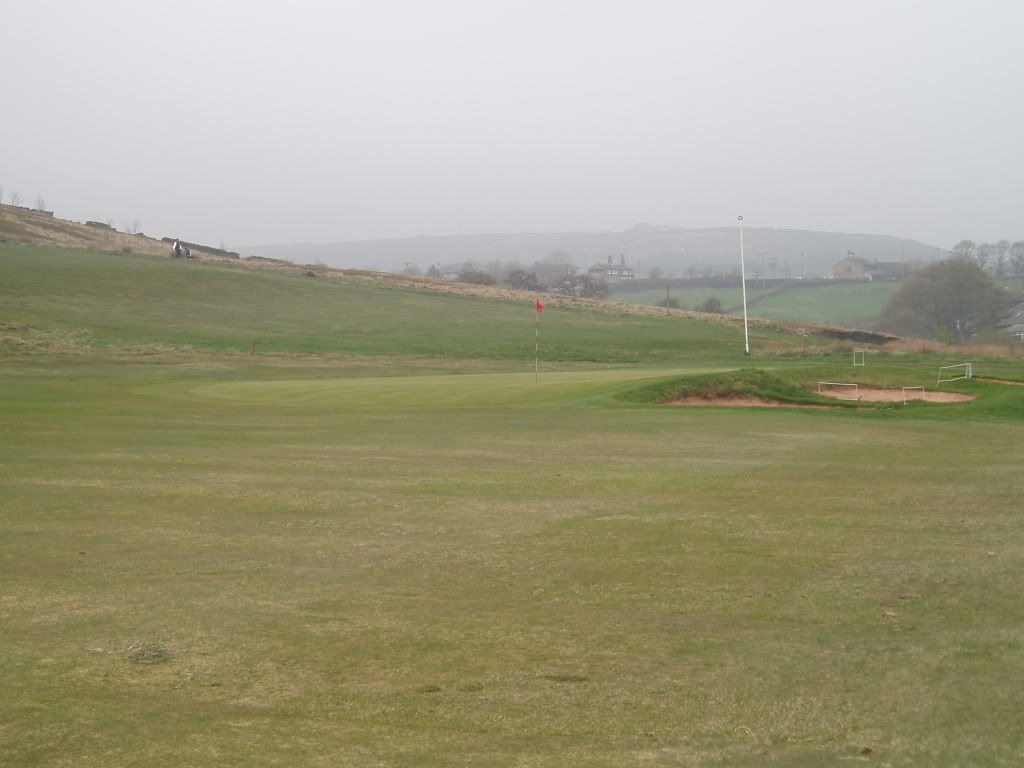
The very featureless nature of the final green is perhaps fitting, for it is a difficult green to pick out against the mountainous backdrop despite the marker post.
All in all a course very high in character, with some real quirk, for sure. As a higher handicapper I should not fancy my chances of compiling a medal score round here, but it is great fun for match play. Total length is 6069 yards, par is 70, standard scratch 69.